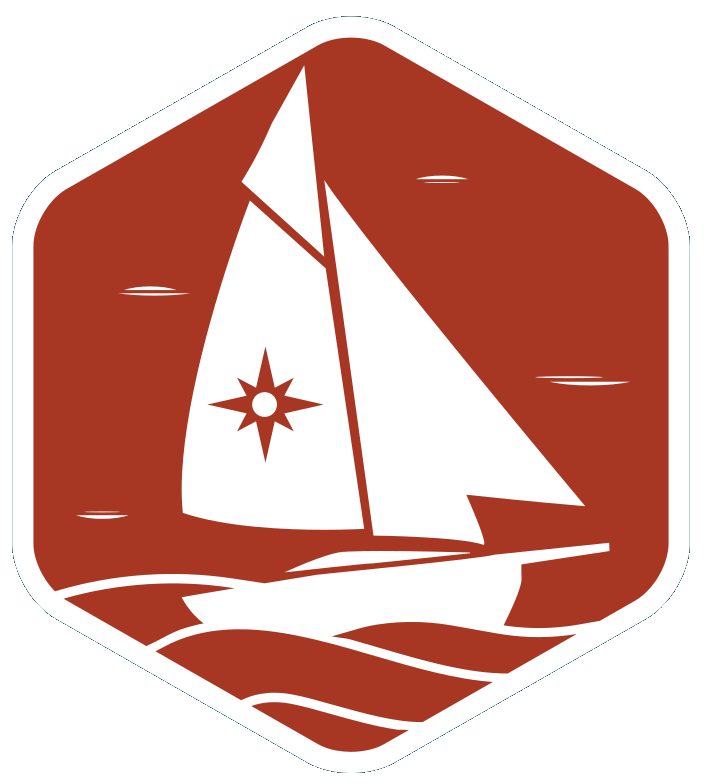Lifetime Achievement Awards
Thursday, Sept 10, 2026 | 5:30 PM, Cruising & Technical Stage
The Wooden Boat Festival Lifetime Achievement Awards recognizes people who have made a significant contribution to the wooden boat community over multiple decades.
These contributions may be demonstrated in one or more of the following ways:
- Leadership in volunteerism and service to the wooden boat community, including work with nonprofit organizations, paid and unpaid
- Major achievements in design, considering number and variety of designs, ingenuity, market recognition, and lasting style impacts for wooden boats great and small
- Excellence in wooden boatbuilding, considering achievements in craft, influential techniques or approaches, and/or commitment to the ethos of wooden boat stewardship and preservation.
- Substantial time and expertise mentoring, engaging, and/or inspiring generations to preserve and celebrate wooden boats and the wooden boat community
- Other meaningful and consistent contributions to the wooden boat community over a period of years that have made an impact on others and their appreciation, understanding, and access to wooden boats.
The awards were conceived in 2007 by Jim Miller, Ted Pike, and Sam Devlin to honor lifetime contributions of individuals in the wooden boat industry. The award, originally sponsored by WoodenBoat magazine, started as a Lifetime Achievement for Design and Building Award, with awardees on both the east and west coasts. It was later expanded by Kaci Cronkhite to recognize broader contributions to the wooden boat community - the Wooden Boat Culture & Community Spirit Award. During the ceremonies on both coasts, NWMC board member Ted Pike served as the heart, voice, and handshake of the awards from 2009 until his passing in 2015.
WoodenBoat magazine discontinued the award on the east coast in 2018. Since then, NWMC and the Port Townsend Wooden Boat Festival has been the only organization in North America with annual recognition of lifetime achievement in wooden boats. Awards for both Design & Building and Culture & Community Spirit have been awarded each year since 2009 (except 2020 due to COVID-19), as well as several special posthumous recognitions. Beginning in 2023, the award’s two categories were combined into a broader recognition of Lifetime Achievement, which may be awarded to 1-4 people each year.
Awards History
Alex Spear
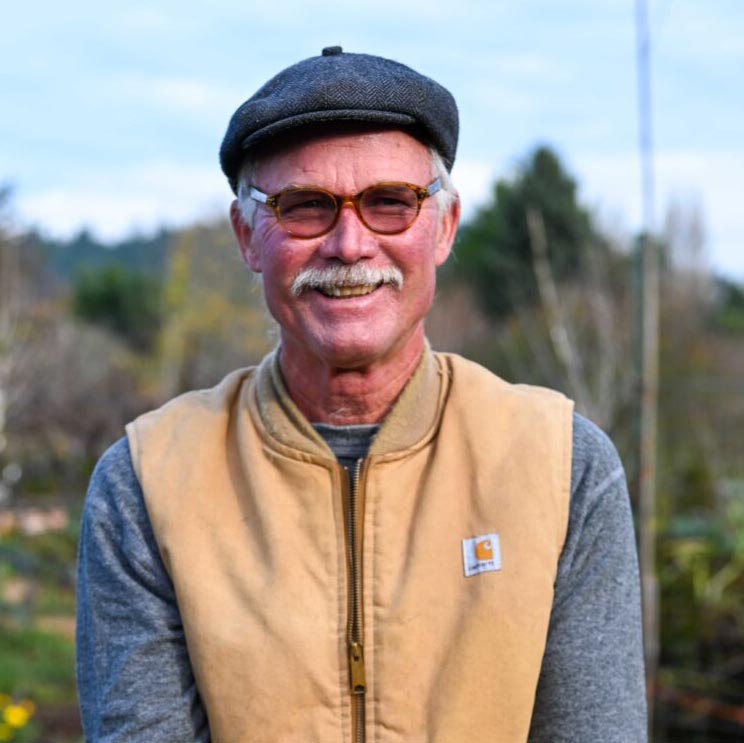 In a town full of maritime characters, Alex Spear’s contribution to Port Townsend’s wooden boat legacy is hard to typecast for its breadth and nuance. As a craftsman, Alex made his bones in Point Hudson’s sawdust-filled heyday. Working with the likes of Ed Louchard and Steve Chapin on signature projects like the the creation of the pilot’s gig Salish Star, a short but celebrated production run of Point Hudson Peapods, and pioneering at least one of PT Watercraft’s first builds, what would become the eponymously named Spear 11. By most measures, his crowning achievement of craftsmanship has been his personal and ongoing stewardship of the boat he’s owned for 45 years, Vito Dumas, doing most of the work himself and perfectly.
In a town full of maritime characters, Alex Spear’s contribution to Port Townsend’s wooden boat legacy is hard to typecast for its breadth and nuance. As a craftsman, Alex made his bones in Point Hudson’s sawdust-filled heyday. Working with the likes of Ed Louchard and Steve Chapin on signature projects like the the creation of the pilot’s gig Salish Star, a short but celebrated production run of Point Hudson Peapods, and pioneering at least one of PT Watercraft’s first builds, what would become the eponymously named Spear 11. By most measures, his crowning achievement of craftsmanship has been his personal and ongoing stewardship of the boat he’s owned for 45 years, Vito Dumas, doing most of the work himself and perfectly.
There are boats that exist as dockside show ponies, there are boats that get used, and rarely do boats have owners who excel at both. Alex is an inspiration; he is always sailing. Weekends away, campaigns to Haida Gwaii, waxing the floor in classic boat races around the buoys and around the islands. Alex and Vito know each other, to watch them sail is as close to witnessing unity that I have ever seen first-hand.
Talented craftsman, excellent sailor, and truly a pillar of our community. His work in official capacities are easiest to see. Longtime board member of the Wooden Boat Foundation then Northwest Maritime, Alex lent his wisdom and generosity to the creation of this campus and thereby all of the growth of programs and experiences since it opened its doors in 2009. What’s harder to see is Alex’s kind and graceful enthusiasm for others' success. He’s been a mentor and a friend, and over the years has lent a hand and his patronage to start up boat shops, advice and labor for boat projects, all with his signature smile and a twinkle in his eye. Some people have exceptional talent as sailors, some as craftsmen, some are the warm-hearted glue that helps people find their better selves and keeps communities together. Alex is one of the rare people who embody all three.
Ernie Baird
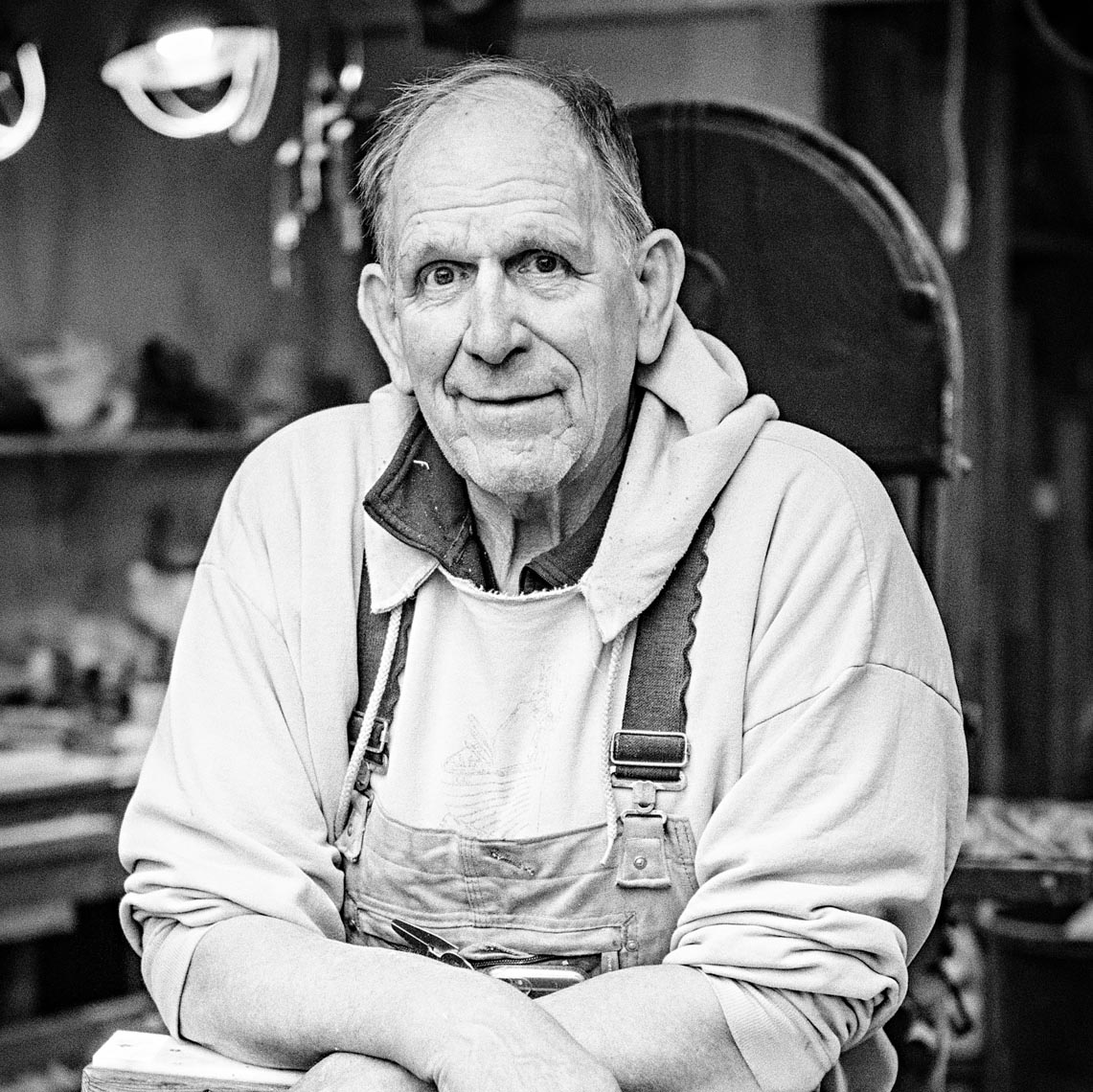 Born in Chicago in 1947, Ernie Baird is the son of an insurance agent and a microbiologist. As a college student, he studied philosophy at the University of Chicago. During the Vietnam War, Ernie became a conscientious objector. In 1970, he began two years of alternative service as a CO in Portland, Oregon. Upon completing his alternative service, Ernie worked as an iron worker in Portland. And then finally, in 1977, he landed in Port Townsend. He engaged in civil disobedience as part of the World Peace swim team as Trident submarines arrived in Bangor, Washington. In September of 1978, Ernie went to work for Mark Burn at Port Townsend Boatworks. Ernie says he was hired because he could lift an eight-by-ten, ten-foot-long, and could pull a trigger on a Skilsaw, but Mark could see the potential that Ernie had as a shipwright. Ernie’s off time was spent building Grace B, a beautiful Crotch Island Pinky.
Born in Chicago in 1947, Ernie Baird is the son of an insurance agent and a microbiologist. As a college student, he studied philosophy at the University of Chicago. During the Vietnam War, Ernie became a conscientious objector. In 1970, he began two years of alternative service as a CO in Portland, Oregon. Upon completing his alternative service, Ernie worked as an iron worker in Portland. And then finally, in 1977, he landed in Port Townsend. He engaged in civil disobedience as part of the World Peace swim team as Trident submarines arrived in Bangor, Washington. In September of 1978, Ernie went to work for Mark Burn at Port Townsend Boatworks. Ernie says he was hired because he could lift an eight-by-ten, ten-foot-long, and could pull a trigger on a Skilsaw, but Mark could see the potential that Ernie had as a shipwright. Ernie’s off time was spent building Grace B, a beautiful Crotch Island Pinky.
Ten years later, Ernie struck out on his own and started Baird Boat Company. At first, Ernie was operating out of the back of his pickup truck. In 1989, he used his crew share as a black cod fisherman to build a shop and began a more substantial business, hiring some of the best local talent. Later, as his business grew, Ernie hired boat school graduates and others who showed an interest in boat construction. In 2004, Ernie turned his business over to seven of his employees, who started Haven Boatworks. Baird Boat Company continued as a business out of Ernie’s home shop, where he repaired small vessels with the help of various apprentices. Today, Ernie’s legacy is evident in the many men and women he helped who are still working in the marine trades in the Port of Port Townsend and beyond.
Lee Ehrheart
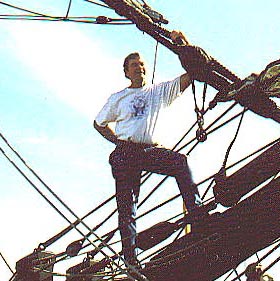 When the Lifetime Achievement awards began in 2007, one of the most important considerations and criteria for awardees was that the individuals not only worked and made a living in the marine field, but they had given that extra bit of energy back into the industry—mentoring and training those that would become the future leaders in our industry. In the case of Lee Ehrheart, we have an individual who has given much back to the marine industry, and we are so very pleased that he has been selected to be awarded a Lifetime Achievement Award in 2025.
When the Lifetime Achievement awards began in 2007, one of the most important considerations and criteria for awardees was that the individuals not only worked and made a living in the marine field, but they had given that extra bit of energy back into the industry—mentoring and training those that would become the future leaders in our industry. In the case of Lee Ehrheart, we have an individual who has given much back to the marine industry, and we are so very pleased that he has been selected to be awarded a Lifetime Achievement Award in 2025.
Lee H. Ehrheart was born late in the month of July 1938 and has spent the past 60 years restoring, building, surveying, living in, and cruising wooden boats. For the last 30 years, Lee has made his living as a marine surveyor specializing in older wooden boats. From his base in Port Townsend, he has had the catbird seat of seeing a thriving community of wooden boatbuilding and repair, and the surveying of those boats is a vital part of that industry.
Lee’s experience with wooden boats came early on with the purchase of the Colin Archer-designed fishing boat Havorn in Norway in 1965. Lee worked to rebuild the Havorn with the idea of world voyaging while he was working at the Elias P. Tomra Boat Yard in Tomrafjord, Norway. From 1967– 1968 he sailed Havorn through Europe, the Mediterranean, West Indies, and finally to San Diego, CA. From 1969-1975, he worked at the Harbor Boat and Yacht Co. in San Diego, further learning the skills and tricks of the shipwright’s trade.
In 1975, the itch was again scratched and Lee and his family sailed Havorn through the South Pacific to New Zealand. For a couple of years, he worked at Salthouse Bros. Boat Yard in Auckland, learning the skills of new boat construction, which was quite different from the repair of older boats. A couple of years taking a break from boatbuilding to prepare Havorn for the voyage to Seattle, in 1979, he hung his shingle out and went back to boatbuilding in Ballard while living on the Havorn. Lee attended anything that passed as a celebration of wooden boats for many years, with Havorn gracing the dock always from the Center for Wooden Boats and Lake Union to the Port Townsend Wooden Boat Festival.
Lee attended the very first Society of Associated Marine Surveyors (SAMS) meeting in 1990 and joined the organization in 1992. He served as the first Pacific Northwest Regional director of SAMS. In 1993, he founded the Havorn Marine Survey and Shipwright school and, for more than three decades, has given back to the marine industry with the training and education to pass on to younger shipwrights and marine surveyors. At the age of 87, he still surveys and enjoys gardening with a recent Master Gardening certification. A very full and very fascinating life, for an extraordinary member of the wooden boat community.
Carol Baker
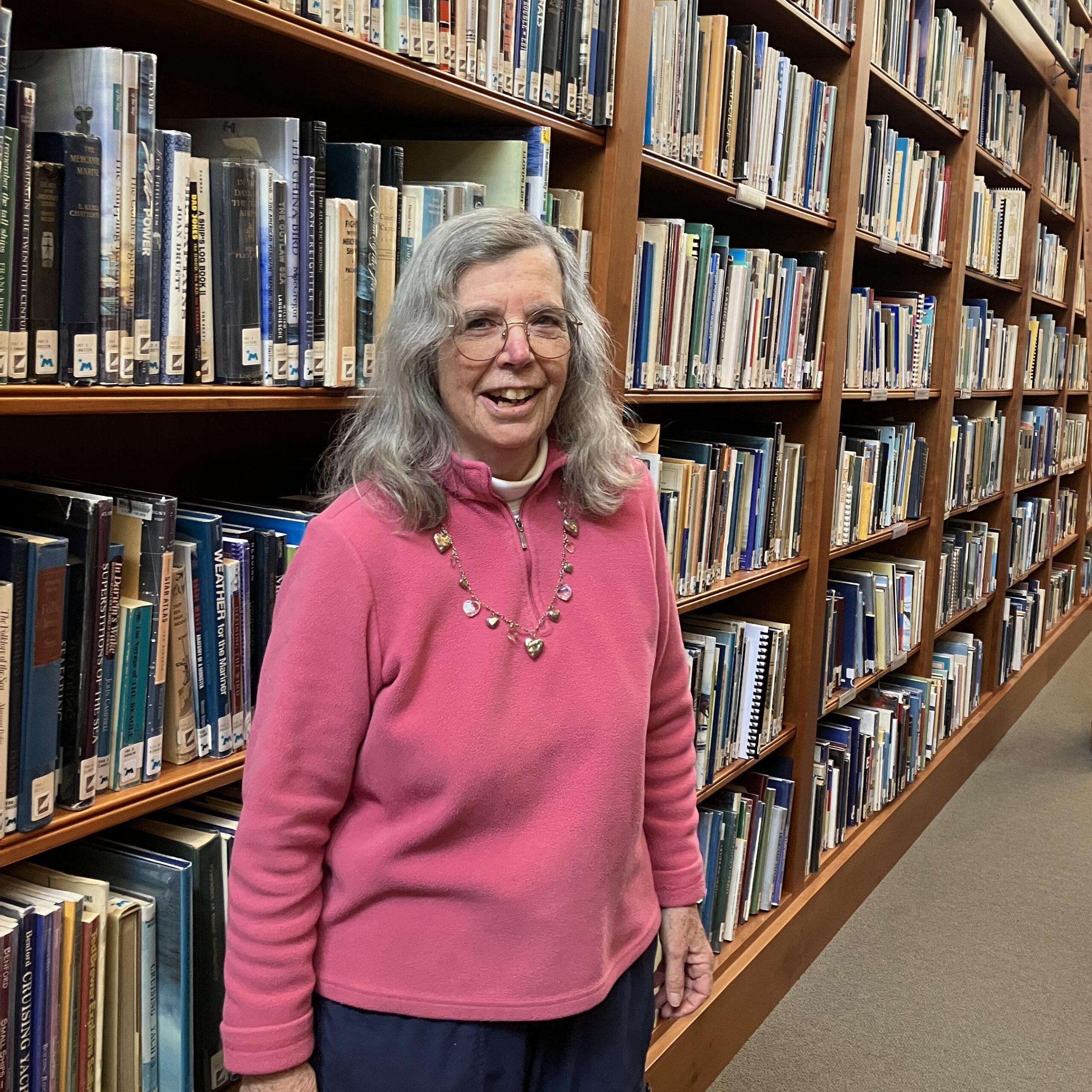 No one has done more in this community to collect, organize, catalog, and build not just one, but two extensive maritime library collections, one at the Port Townsend Public Library, established in 1993, and the other at Northwest Maritime’s H. W. McCurdy Library. With these two large collections, residents and visitors have free and public access to resources on all maritime subjects.
No one has done more in this community to collect, organize, catalog, and build not just one, but two extensive maritime library collections, one at the Port Townsend Public Library, established in 1993, and the other at Northwest Maritime’s H. W. McCurdy Library. With these two large collections, residents and visitors have free and public access to resources on all maritime subjects.
Carol Baker was born in New York City and learned to sail as a child in the waters off Long Island. As a teenager, she enjoyed racing her Sunfish on the Great South Bay. After college, in 1970, she drove west to Seattle, where she fell in love with the Pacific Northwest. While living in Seattle, she met friends who lived on boats and thought she would like to try that herself. In 1980, she bought Puffin, a 25’ wooden gaff rig sloop which became her home for the next 10 years. In 1982, after attending Wooden Boat Festival, she sailed Puffin to Port Townsend and was lucky to acquire a live-aboard slip in Boat Haven. One of her first jobs in Port Townsend was working for the Port as a “Dock Cop,” walking the docks and making sure visiting boats paid their nightly moorage fees. Also, during this period, Carol shipped out several times as an Ordinary Seaman on Research Vessels, mostly going to the Bering Sea.
Carol’s library career began in 1987 when she got a job at the Port Townsend Library. She immediately started to hear from boatbuilding and sailing friends about the lack of nautical books and the community’s need for more. Since the library budget was not large enough to accomplish this, Carol took on the task of writing a development grant requesting funding from the Washington State Library. During the 1992 Wooden Boat Festival, Carol garnered 40 lengthy letters of support for the grant from community leaders—a big part of making the grant successful. With funding in hand, Carol was able to spend 1993 establishing the Library’s much expanded maritime collection, which is still there and in use today.
Carol’s second library project began in 2009 after the merger of the Wooden Boat Foundation and Northwest Maritime when she took the lead in moving, cataloging, and re-shelving the WBF’s Cupola House library collection into the new Northwest Maritime Center’s H.W. McCurdy Library.
Under Carol’s ongoing guidance, the H.W. McCurdy Library has grown from the original WBF collection of 1300 books to nearly 7000 items which are also integrated into with the Port Townsend and Jefferson County Public Libraries, through the online catalog system (C.L.E.O), making borrowing books accessible to anyone with a local library card. Highlights of the collection include a number of rare 19th century books on Yacht Design, an early edition of Captain Joshua Slocum’s Sailing Alone Around the World, inscribed by the author, two large photo albums documenting shipping on Puget Sound from the Age of Sail to the Mosquito Fleet, and a large collection of the legendary Rudder Magazine (donated by an Australian) going back to the 1920s.
With the establishment and the continued expansion of these two maritime collections, Carol has given the Port Townsend community a resource and welcoming space where current and future generations can come to learn and be inspired.
She feels very fortunate to have found a calling that combines her librarian skills with her love of books and all things maritime.
Jeff Hammond
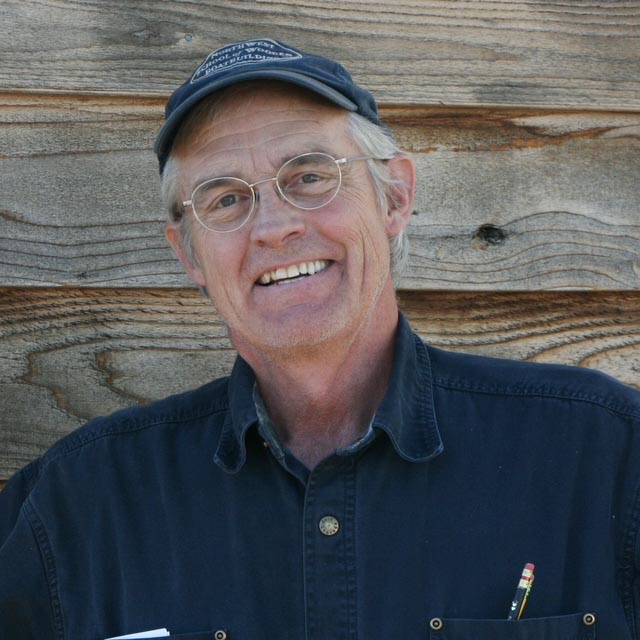 Jeff Hammond was born and raised in Wisconsin. He went to two colleges there, Rippon and Carroll, studying elementary education. During the summers, to pay for his college education, he worked in house construction. Eventually, Jeff quit school to build houses full-time. In 1985, Jeff moved to Port Townsend, WA, to attend The Northwest School of Wooden Boatbuilding’s six-month program. He then attended for an additional six months. After just a few weeks of working in cabinet shops in Port Townsend, Bob Prothero asked Jeff to come back to the school—this time as an instructor.
Jeff Hammond was born and raised in Wisconsin. He went to two colleges there, Rippon and Carroll, studying elementary education. During the summers, to pay for his college education, he worked in house construction. Eventually, Jeff quit school to build houses full-time. In 1985, Jeff moved to Port Townsend, WA, to attend The Northwest School of Wooden Boatbuilding’s six-month program. He then attended for an additional six months. After just a few weeks of working in cabinet shops in Port Townsend, Bob Prothero asked Jeff to come back to the school—this time as an instructor.
The rest is an amazing history of a dedicated, patient man teaching and inspiring hundreds of students over the next 30 years, most of that time as chief instructor. For a brief time, he was also acting director of the school. Jeff’s unique ability to draw boatbuilding procedures on a chalkboard, while talking, has helped so many future shipwrights to understand boat construction. Jeff saw the school’s move from its Otto Street location to its Port Hadlock location. In 2010–2011, a new building was constructed on the upper campus of the school and was named in Jeff’s honor. After all, Jeff was the heart and soul of the school at that point. Even after moving to Bend, Oregon, in 2015, Jeff continued to fill in for instructors on leave or when certain projects needed his help.
In 2022, Jeff returned to Port Townsend, built a beautiful house for himself and his wife, Marilyn, and is using his patternmaking skills to sew clothing, packs, hats, and quilts. To this day, Jeff continues to maintain close relationships with many of his former students.
Jim Tolpin
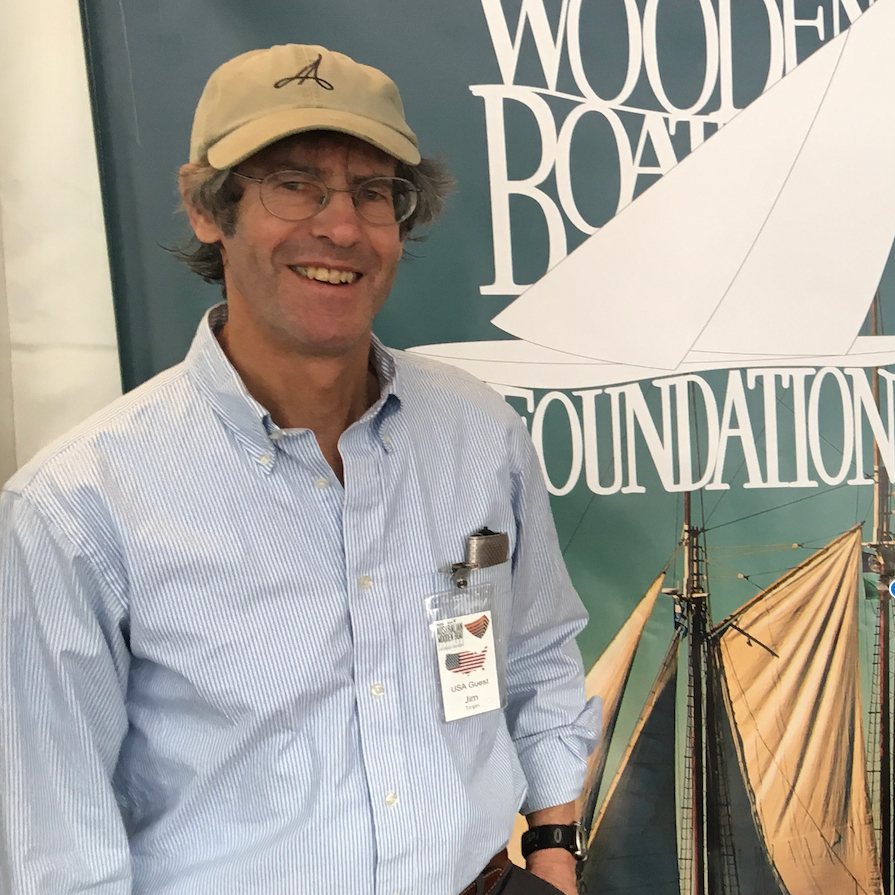
Internationally renowned woodworker, finish carpenter, author, and educator, Jim Tolpin has been crafting a life from wood “by hand and by eye” since the 1970s. His masterfully crafted cabinetry and furniture (of all sizes and shapes) have adorned homes on both coasts and can be found in the woods (cottages), on water (boats), and on wheels (gypsy wagons). His lifetime inventory of hand-crafted works ranges, as he describes, "from boxes to boats, pitchforks to pegs, and cottages to caravans.”
In the late 1980s, spurred by echoes of advice from his mentor Bud McIntosh, Jim wrote and published his first book, Working at Woodworking. Now, 18 books later, with a million books sold and an impressive online audience of international followers on Instagram and YouTube, Jim is one of America’s most prolific, respected, and inspiring author educators to generations of woodworkers—from beginners to masters of the craft. His passion for learning and honing the skills of the craft are exponentially matched by a passion for teaching.
In 2007, with fellow woodworkers John Marckworth and Tim Lawson, Jim co-founded the Port Townsend School of Woodworking. Since then, thousands of students have taken weekend to 12-week workshops. The school continues to deliver high-quality instruction by professional educators who are able to recognize individual learning styles, employ excellent communication skills, and are always generous with their patience and good humor.
Jim describes, “The way has come full circle back to where I started: To the act of simply touching the wood. For I have come to realize that while the stuff I make is for the world, the making of it is for me.”
On his website, ByHandandEye, there’s a prominent quote by Gustav Mahler (1860-1911) that reads, “Tradition is not the worship of ashes but the preservation of fire.” Not only has Jim Tolpin’s fire preserved, he is preserving it for others.
Margie Abraham
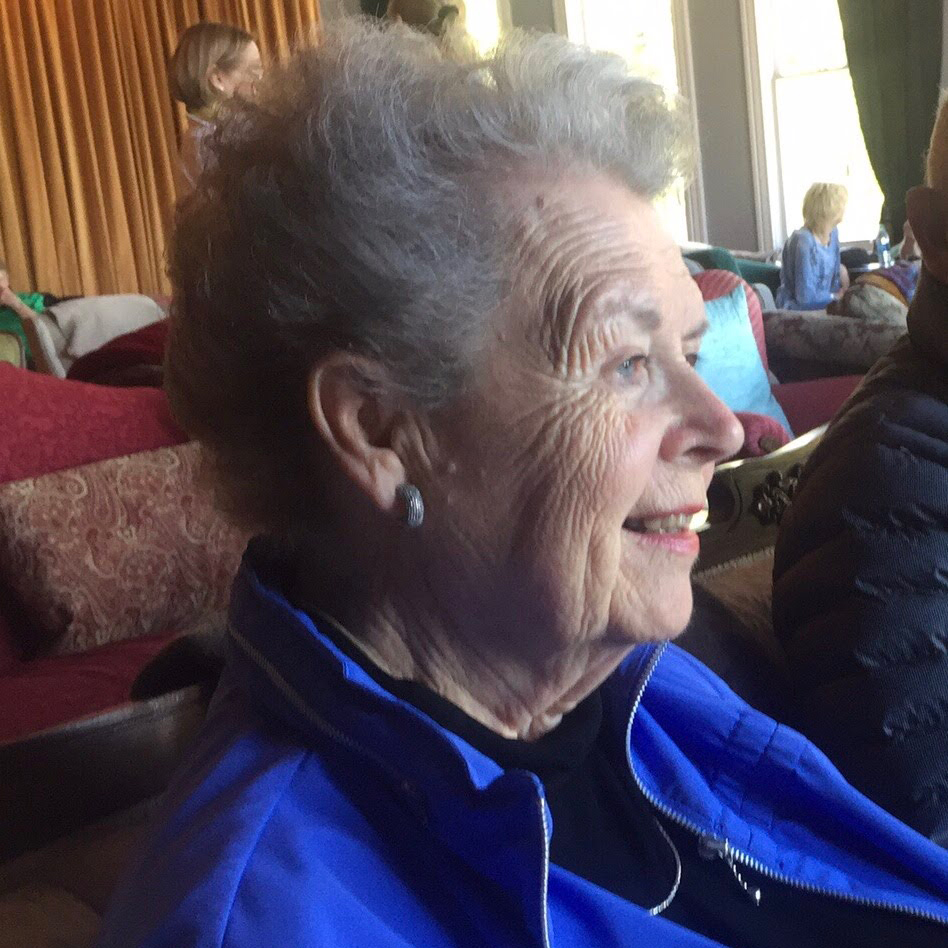 For 90 years, Margie Abraham has been an instigator, enthusiast, participant, and eagle-eyed letter-writing advocate for much of what’s become known as maritime culture in Port Townsend. She moved here when she was 3 years old. Her influence on this community started not long after when she met her lifelong best friend and co-conspirator Donna Verrier (later Daubenberger) in first grade and her future husband Glenn Abraham who was in second grade.
For 90 years, Margie Abraham has been an instigator, enthusiast, participant, and eagle-eyed letter-writing advocate for much of what’s become known as maritime culture in Port Townsend. She moved here when she was 3 years old. Her influence on this community started not long after when she met her lifelong best friend and co-conspirator Donna Verrier (later Daubenberger) in first grade and her future husband Glenn Abraham who was in second grade.After a childhood boating with her family on the waterfront, in 1962, the Abrahams, the Daubenbergers, and the Scheyers ordered and took delivery of three Thunderbird sailboats—a new 26’ class of plywood racing sloops in the Pacific Northwest. Back then, in the early 1960s, they were the only three sailboats on the waterfront! Thunderbirds became the foundation of the nascent sailing and racing cultures that Port Townsend is known for today.
Years later, when the Abraham’s boat, Caveat, was donated by different owners to the “new” Northwest Maritime Center around 2008, Margie donated the original, hand-written, splash-stained Ship’s Log to the H.W. McCurdy Library to be preserved as a record of this era of community history. Her daughter, Annie, is now restoring Caveat in Boat Haven marina.
Raising two daughters in a family passionate about sailing, Margie and Glenn cruised extensively and raced competitively. Their enthusiasm overlapped to local school friends of their daughter who were often invited to crew. This inspired the start of another deep Port Townsend institution—sail training classes—taught by Glenn and Jim Daubenberger and supported by Margie for decades through subsequent generations.
Margie’s sense of adventure and pursuit of good fun helped to fill the Port Townsend Yacht Club’s events calendar, which was legendary. She has a rare depth of graciousness and extends her warmth around all in equal measure, building community. Decades ago, she and Donna took upon themselves the Trees for Port Townsend project. Without sponsorship, they raised enough funds to buy 500 trees which they planted throughout Port Townsend and Fort Worden. Those trees stand sentinel now to a precious life well lived.
Dave Thompson
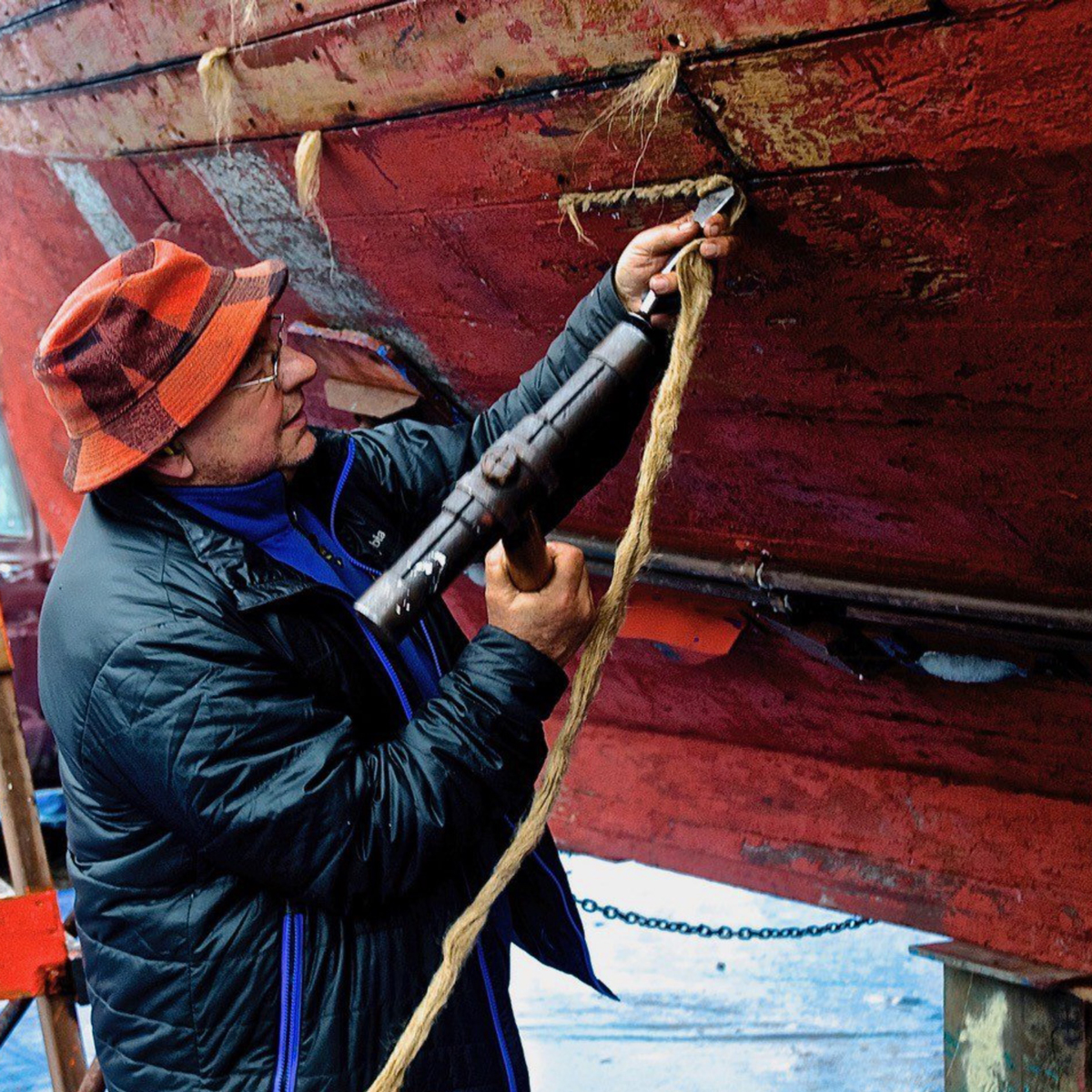 Calker Dave’s first introduction to boats was racing Blanchard’s with his father in Coeur d’Alene at the tender age of three. The two raced through most of Dave’s childhood. Coming of age, Dave joined the Navy, then did various jobs like accounting, real estate, and working in a mental institution—all to put himself through university. His first foray into shipwrighting happened in Seattle when Dave offered to help a friend repair a leaky boat. Arriving in Port Townsend in 1974, Dave “drifted in with the tide” on a sailboat he was living on. At first, Dave worked for the Port of Port Townsend helping haul boats and pump gas. Next, he became a shipwright, working for Mark Burn at Port Townsend Boatworks. Dave worked on repairing many fish boats and a new build fish boat, F/V China Cove.
Calker Dave’s first introduction to boats was racing Blanchard’s with his father in Coeur d’Alene at the tender age of three. The two raced through most of Dave’s childhood. Coming of age, Dave joined the Navy, then did various jobs like accounting, real estate, and working in a mental institution—all to put himself through university. His first foray into shipwrighting happened in Seattle when Dave offered to help a friend repair a leaky boat. Arriving in Port Townsend in 1974, Dave “drifted in with the tide” on a sailboat he was living on. At first, Dave worked for the Port of Port Townsend helping haul boats and pump gas. Next, he became a shipwright, working for Mark Burn at Port Townsend Boatworks. Dave worked on repairing many fish boats and a new build fish boat, F/V China Cove.In 1982, a contingent of boatworkers from PT Boatworks split off and formed the Shipwright’s Coop. Dave was amongst the first members. He stayed as a member for five years, eventually striking out on his own. Dave did not want to compete with his fellow Coop members, so Dave chose to become an itinerant shipwright casting further afield for work. Those projects include the Corwyth Cramer in Miami, FL; Lady Washington in Aberdeen, WA; and working for Bay Ship and Yacht in Seattle, WA. Eventually, Dave drifted back to Port Townsend, working as an independent in every corner of the yard. When asked what his favorite projects were, Dave said unequivocally seiner rebuilds and there were many in Port Townsend. He continues to this day, fifty years after arriving in Port Townsend, helping complete all sorts of wooden boat projects, calking, and helping many new shipwrights find their footing in the yard.
Ray Speck

Ray learned lapstrake boatbuilding in 1972, working with Jack Lowther and David Winspear in Whitby, England. Though it was only a few weeks of exposure, he witnessed enough to set up shop on the waterfront of Sausalito, CA, in 1974—focusing on new boat construction with a commission for two 13' Whitehall boats. A one-man shop, he endlessly helped others with generous encouragement and by sharing his knowledge. In 1983, although having already built thirty-five boats, Ray jumped at a scholarship to attend the Northwest School of Wooden Boatbuilding to learn much more from the Master Boatbuilder, Bob Prothero. In 1991, he closed his one-man shop in Port Townsend and became an instructor at the boat school. There, it could be said, "he launched a thousand ships," considering the dozens and dozens of students inspired by him to this life. With immense knowledge, humor, and a knack for the sublime, he sums up his expertise best in his own words: "Well, wooden boatbuilding is nothing more than a million simple tricks it takes a lifetime to learn. Retaining them is another issue."
Neil Rabinowitz
 If you picked up a boating magazine or attended a boat show in the last 40 years nearly anywhere in the world, you would have a hard time not looking at lovely photographic images captured by marine photographer Neil Rabinowitz. Neil is nothing short of a marine photographic genius. For more than 40 years, he generously shared those gifts by donating the use of his photographs to the Port Townsend Wooden Boat Festival.
If you picked up a boating magazine or attended a boat show in the last 40 years nearly anywhere in the world, you would have a hard time not looking at lovely photographic images captured by marine photographer Neil Rabinowitz. Neil is nothing short of a marine photographic genius. For more than 40 years, he generously shared those gifts by donating the use of his photographs to the Port Townsend Wooden Boat Festival.Neil has amassed more than 5 million photographic images in his long career and has written hundreds of features about the lifestyle and beauty of boats. While wielding his craft and his art, Neil has been our neighbor living on Bainbridge Island for more than 40 years with his family, and he is one of our most outspoken and consistent voices in promoting the boatbuilding community in the Northwest. His images and copy highlight the best of our industry, whether the boats were small or large, and his true love has always been wooden boats. When asked what was the driving force that gave him this amazing career, he makes a simple statement: “I get up early. It sounds simple, but that says it all. I tried harder and always delivered. That’s how I built my career.”
Betsy Davis
 As a leadership mentor, growth manager, and ever-generous collaborator, Betsy Davis has built a profound legacy of optimism and organizational resilience for wooden boat entities in the Pacific Northwest—in turn, bolstering organizations nationwide. Much of the inspiration for her decades-long career was learned from her “incredible teacher”—the 36’ 1914 classic motorboat GloryBe. After 14 years at Microsoft, she bought the boat and subsequently enrolled in Seattle Central College’s boatbuilding program. Working alongside other students to rebuild GloryBe after she burned and sank in a marina fire, Betsy experienced the joy of “raising all boats” in community. She went on to serve 11 years as Executive Director of The Center for Wooden Boats, building its presence and programs as South Lake Union grew exponentially. In 2015, she became Executive Director of Northwest School of Wooden Boatbuilding—adding a Marine Systems program and $3 million of improvements to equipment and facilities on the now 8-acre campus. Along the way, she has inspired countless young staff and managers to leadership positions at many of the top non-profit, education, maritime, government, and entrepreneurial endeavors in our region—raising all boats.
As a leadership mentor, growth manager, and ever-generous collaborator, Betsy Davis has built a profound legacy of optimism and organizational resilience for wooden boat entities in the Pacific Northwest—in turn, bolstering organizations nationwide. Much of the inspiration for her decades-long career was learned from her “incredible teacher”—the 36’ 1914 classic motorboat GloryBe. After 14 years at Microsoft, she bought the boat and subsequently enrolled in Seattle Central College’s boatbuilding program. Working alongside other students to rebuild GloryBe after she burned and sank in a marina fire, Betsy experienced the joy of “raising all boats” in community. She went on to serve 11 years as Executive Director of The Center for Wooden Boats, building its presence and programs as South Lake Union grew exponentially. In 2015, she became Executive Director of Northwest School of Wooden Boatbuilding—adding a Marine Systems program and $3 million of improvements to equipment and facilities on the now 8-acre campus. Along the way, she has inspired countless young staff and managers to leadership positions at many of the top non-profit, education, maritime, government, and entrepreneurial endeavors in our region—raising all boats.Community Spirit & Culture: Hanke Family
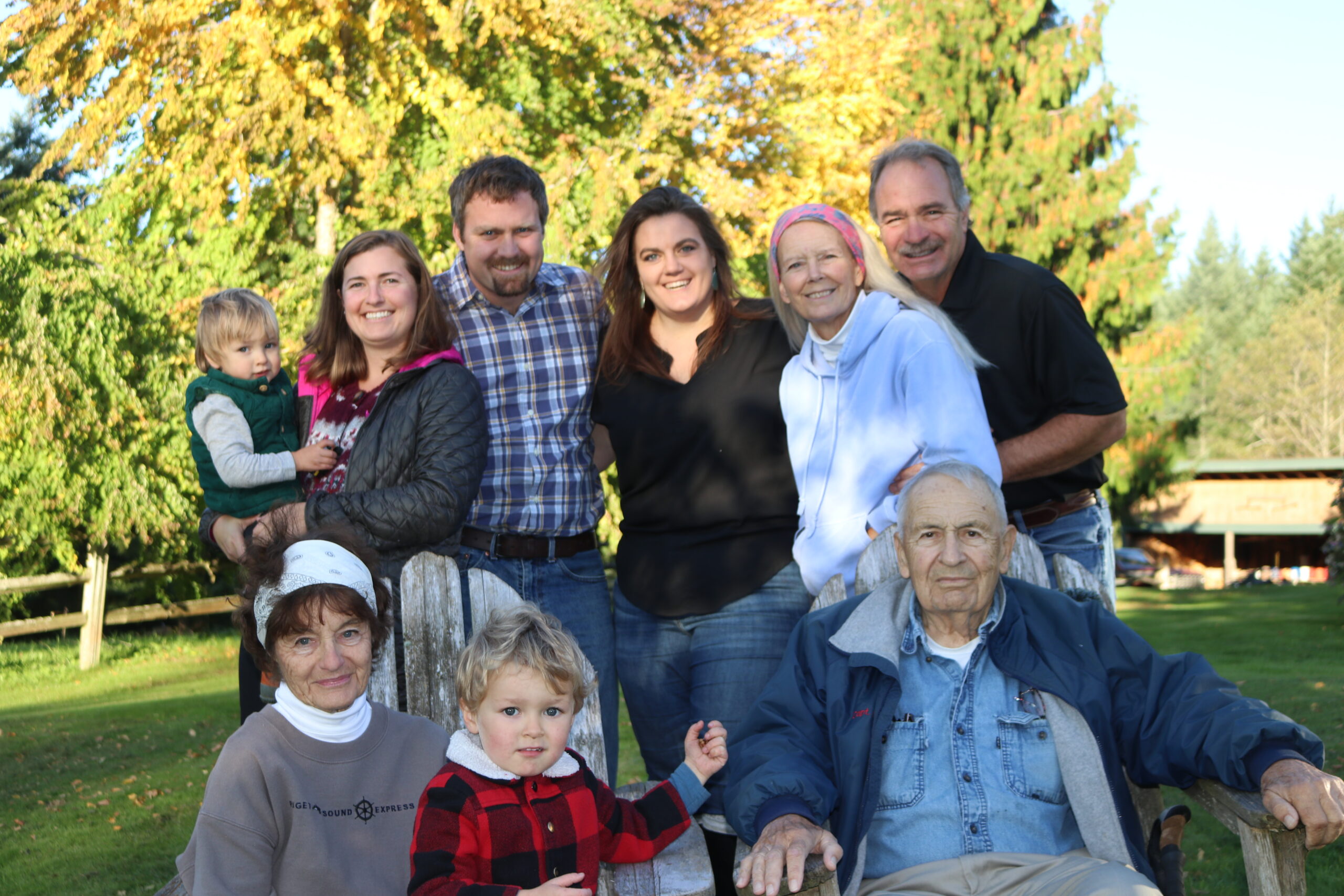
Hanke is a name that’s become synonymous with family-run small business entrepreneurship in Port Townsend. For three generations (soon to be four), Hanke couples, parents and children, grandparents and grandchildren, siblings, or all of the above have been working together, creating Port-based businesses and volunteering in a variety of community and non-profit roles.
Peter and Sue (Wakefield) are the eldest generation. In the 1970s, their dreams grew beyond farming. Thanks to a fortunate friendship with boatbuilder, Frank Prothero, they purchased, completed the interior, and launched their first sail charter business with the 80-foot schooner Alcyone in 1981. The Hanke’s chartered the boat with family as crew throughout the region.
In 1985, Peter and Sue plus Pete and Sherri (Otteson) founded PS Express. Over the years, they morphed the sail charter business to San Juan ferry dreams, fishing and dive charters, to the region’s top whale and marine life tours. They’ve continually expanded a fleet of boats, and provided training and employment to dozens of captains, naturalists, and shoreside operations crew each year--inspiring over 20,000 people a year to get out on the water, learn about, and love the marine life of the region.
In addition to operating the business and repairing/maintaining the boats in Port Townsend, Peter volunteered driving boats like the non-profit M/V Lotus. Sue served on the board of the Wooden Boat Foundation. Pete served as Festival Harbor Master, stopping only for their wedding day. He served for years on both Wooden Boat Foundation and Northwest Maritime Center boards before becoming a three-term Port Commissioner. Sherri served 15 years on Port Townsend’s Lodging Tax committee and 10 as a court-appointed Guardian ad Litem.
Third-generation siblings Christopher and Sarah Hanke are now managing the boats and operations in Port Townsend, Port Angeles, and Edmonds. Like their parents and grandparents, both have a heart for service that inspires the protection of marine wildlife and sustainability of Port Townsend’s maritime trades and culture. Christopher and wife, Hailey (Beres), are raising the next generation: Paul, Daniel, and Silas. Sarah serves on the board of Long Live the Kings, a salmon restoration organization whose mission is to restore wild salmon and steelhead and support sustainable fishing in the Pacific Northwest. One of their most recent projects is looking at the effects of the Hood Canal Bridge and steelhead returning to their original spawning grounds in the Hood Canal.
The Hanke’s are the first family to be awarded WBF’s Lifetime Achievement Award for Community Spirit and Culture, for to honor one is to honor them all.
Boatbuilding & Design: Steven Rander
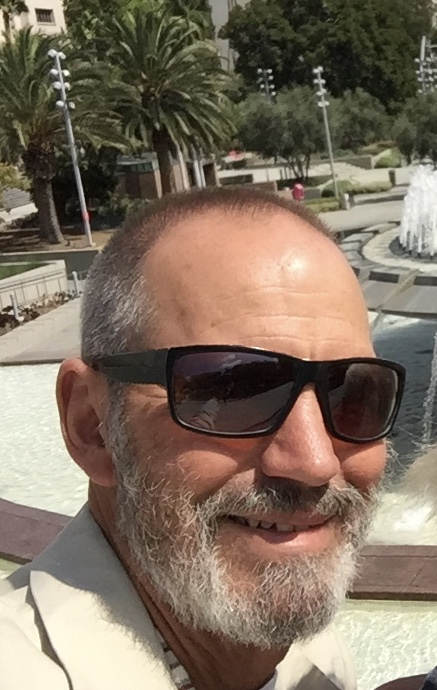 Steven Rander was born in 1946 in Southern California and one of his first memories was of his father taking him sailing in Balboa on a rented daysailer when he was young. While still in school, Steve remembers building alongside his father small boats for neighbors and a small daysailer that gave a platform for he and his brother to learn to sail. The love of sailing was instilled early on in Steve’s life and later became the primary moving force for both earning a living and establishing himself as one of the premier boat builders in the Pacific Northwest.
Steven Rander was born in 1946 in Southern California and one of his first memories was of his father taking him sailing in Balboa on a rented daysailer when he was young. While still in school, Steve remembers building alongside his father small boats for neighbors and a small daysailer that gave a platform for he and his brother to learn to sail. The love of sailing was instilled early on in Steve’s life and later became the primary moving force for both earning a living and establishing himself as one of the premier boat builders in the Pacific Northwest. When Steve graduated high school, he immediately went to the Wayfarer Yacht Corporation in Costa Mesa to hire on as a finish carpenter, only to get a chuckle from the foreman due to his young age. However, he showed up on his first day at work with a knapsack of sharp tools and spent that summer doing a variety of jobs around the boatyard, helping to build Islander 24s and 32s, that was in 1964.
By 1965, the draft wanted Steve and not wishing to spend his service time in the Army, he joined the Navy and ended up spending thee years, with two of those years in Viet Nam and one in a river patrol squadron. Once out of the Navy, Steve started moving North, first to Santa Barbara where he did a lot of sailing, then onto Astoria Oregon and finally to Portland Oregon, his current home for many years. In Portland, Steve first worked for a local yacht broker doing some sales, but mostly yacht commissioning, and repair work. It was at this time that Steve first had the notion that there could be a market for higher quality custom-built boats. It was also the time that people were starting to look at wood for boat building, with the revival of the wooden boat industry catalyzed by the new publication WoodenBoat Magazine first published in 1974.
Wood has always been Steve’s first choice as a building material due to its low density and high structural strength, and in 1977 Steve started his company named Schooner Creek Boat Works.
Schooner Creek made its payroll from day to day by doing repair work and rebuilds, but during the next 5 years between 1977 and 1982 also managed to build and sell over 40 different boats. The boats ranged from 7’ rowing prams to the 42’ ULDB sailboat “Magic Carpet” (designed by Robert A. Smith) including (6) 18’ Bill Garden designed Eels, a Swampscott sailing dory, and a 24’ Friendship Sloop (also designed by Robert A. Smith).
“Magic Carpet” was designed for Steve for the purpose of racing and showing off his construction methods. When asked how Steve intended to build her, he presented to the designer Smith a concept for building wood boats with a foam core to reduce the overall weight without sacrificing the structural strength.
In 1983 Steve sold Schooner Creek Boatworks to his co-workers and Steve took Magic Carpet to Seattle to campaign her for the next few years. Including a trip down to San Francisco in 1984 to race to Hawaii, a race he and his crew won.
When Steve returned to Portland in 1985, he took on the building of the tooling for Christenson Motor Yachts newest design. While they were building fiberglass yachts the tooling or plug from which the molds were to be built was made from wood. The plug was 125’ long, 25’ high and 30’ wide. There had never been a mold built that large before. By the time Steve had finished the plug and the mold builders were starting their work, it was time for another Hawaii race, so he parted ways with Christenson, and Raced his 2nd race to Hawaii in “Magic Carpet”.
When Steve again returned to Portland it was to head up the rebuild project on “Tiama” a 65’ schooner designed by Bill Garden that was built by George Calkins (lifetime achievement award 2008) originally as a commercial fishing boat. George and his wife Wilma sailed “Tiama” to Hawaii and later sold her to George Walker who wanted it converted it into a full-time yacht. This was a great project and lasted nearly 3 years. She was striking and when finished Steve and George sailed her up for the Port Townsend Wooden Boat Festival. While there George Calkins came aboard and as a builder redoing another builder’s work, Steve nervously sat on his hands not knowing what to expect as George wandered through the boat. George finally sat down after his inspection and with a big smile on his face and said, “You have done what I could not have afforded to do, she’s beautiful”.
At the conclusion of the “Tiama” project Steve re-opened Schooner Creek Boats (the company had been previously closed by its purchaser) and the first build project was a new 27’ cutter of wood construction for the Portland based naval architect Robert Smith.
Steve then sold “Magic Carpet” to one of his crew who had raced on her previously and turned the proceeds into the seed money for the 70’ “Rage” which was designed by Tom Wylie. “Rage” is another wood/ epoxy boat built with a foam core. When Tom was working on the boat’s drawings, he asked Steve about the construction method and Steve replied, “let’s build her the same as Magic Carpet only lets increase the core from ½” to 1” as the spans between supporting structures are larger”. That is what they did, and she has been a very successful racing boat. Schooner Creek later got an order from a customer in Hong Kong for a larger version of “Rage” , 77’ft. long and Steve being at first a bit apprehensive as to how far he could go with this type of construction, so Steve decided to do some testing to see what the foam/wood construction could tackle for scantlings and sizes of vessels built.
The Gougeon’s of West Epoxy fame and Steve were good friends, and he went to their testing lab with test panels of not only wood and core but of various combinations and thicknesses. The results were that the wood/foam build technique was much stronger than Steve had initially imagined and the 77 was built successfully. Two more Wylie designed 52’s, and a Robert Perry designed 40’ sloop builds followed before Schooner Creek moved out of their old shop into a new one on Hayden Island.
Once in the new shop the first building project was the Wylie design 60’ sloop designed for the Vendee Globe race and the result “Ocean Planet” has raced twice around the world single handed. Steve’s company then built two Robert Perry designed power boats, one a high-speed runabout, the other a 40’ commuter launch for a hotel in Florida. Another 40’ power boat that was designed by Bill Garden followed those builds.
About this time Schooner Creek started building catamarans for Hawaii charter businesses. The first was from the board of Kurt Hughes, a 62’ power catamaran, and then a John Marples designed 65’ sailing cat, followed by a pretty 52’ catamaran designed by Morrelli and Melvin for a cruising couple. The list keeps going, and while not all the boats Schooner Creek has built over the years were wood, some were carbon and Fiberglass, wood/epoxy has always been a major component in the construction of all the boats.
Steve then sold the business Schooner Creek to Kevin Flanigan, at first a customer for whom they had built several boats, previously. Kevin now continues building mostly in Fiberglass for the Charter Cat industry, and while Steve is supposed to be retired, he is currently working with Tom Wylie on a new design for an 80’ sloop to be built out of wood, foam, carbon and epoxy for the current owner of “Rage”, Dave Raney. If time were spent going through the records, Steve and his company Schooner Creek has built in total over 70 yachts of various sizes and designs. Along the way Steve has managed to get in a fair amount of sailing as well, 21 Transpacific crossings, 1 race to Tahiti and more than 75,000 offshore and coastal miles under sail.
Over the years Steve has received a Certificate of Appreciation from the Society of Marine Surveyors for his contributions to education, The Society of Navel Architects and Marine Engineers has recognized him with a certificate of appreciation for his “Technological Advances in Yacht Design” and the US Coast Guard Marine Safety Unit Portland awarded Steve a Certificate of Merit for his dedication to marine safety and education.
Community Spirit & Culture: David King
Profile by Steve Oliver
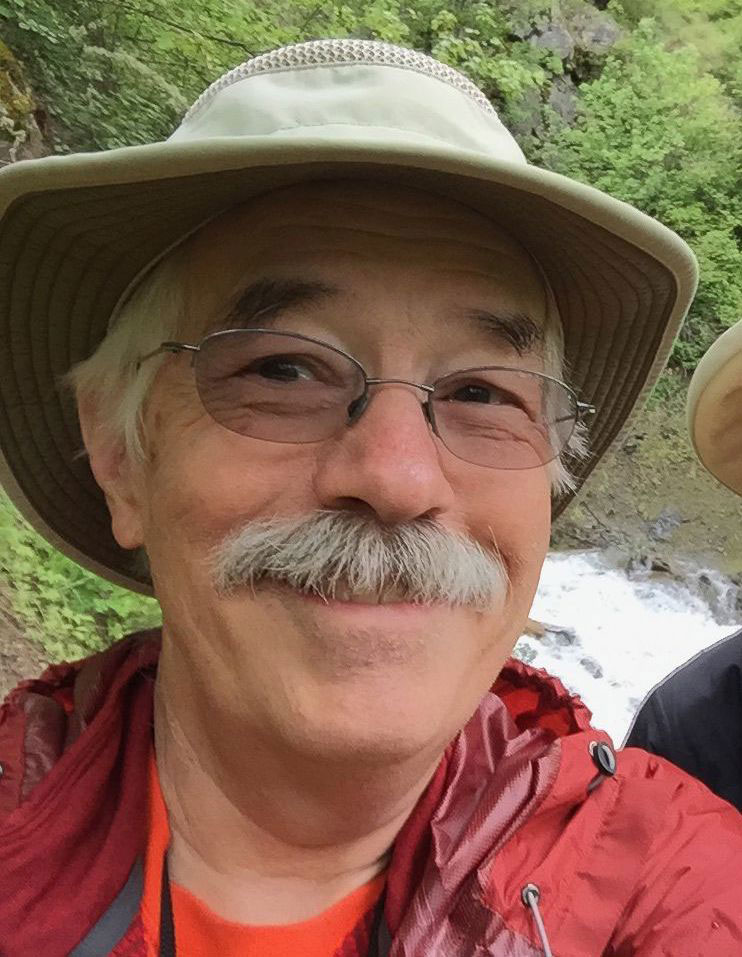
The best way to gain an appreciation of Dave King’s achievements as a boat builder and his myriad contributions to the preservation and advancement of that industry is to sit in the sunshine on the deck of Sirens, share a beer, and talk with him about the boats plying the bay. His love of his life in the maritime industry and his unique contributions to the preservation of the maritime patina of Port Townsend will gently emerge. You will soon discover within his calm, good humored, and delightfully loquacious exterior a savvy entrepreneur, a skilled politician, and a self-effacing man devoted to his wife Alice, his family, and the welfare of his community. He is without doubt richly deserving of this award.
It has been my privilege to work side-by-side with Dave for over 20 years in the planning, development, and governance of the Northwest Maritime Center. His many years of devotion to that entity have been critical to its success. He was a founding Board member of the organization, served as its President as we reached the decision to go forward with construction, and has served many years as the organization’s ever-vigilant Treasurer.
But did you know he is a Harvard graduate? As a college undergrad, he audaciously penned a letter to the legendary designer (and past recipient of this award) William Garden requesting plans for his “Porpoise” design (a 43’ ketch) which he wanted to build “that summer”. Garden politely wrote back to him and suggested that perhaps he should learn the trade before embarking on such a project. That letter launched a career that began not long after on the shores of the Chesapeake (where he happened to first meet Lyn and Larry Pardey).
A few years later, he drifted north to Bath, Maine, where he ultimately taught in the apprenticeship program of the Bath Maritime Academy. In 1978, he traveled west, met his bride to be, Alice, and they found their way to the 1978 Port Townsend Wooden Boat Festival. Like others who contributed to the legendary resurgence of our maritime industry, they were smitten and stayed.
Dave began his career here working out of his pickup and a small space in what is now the Admiral Ship Supply building. He worked several years for Cecil Lange who he refers to as “a largely unheralded rainmaker for our marine trades.” Thereafter he went to work for Admiral Marine Works, building and beach launching in legendary fashion mega-yachts like Eviva. His responsibilities grew with that organization to the point it had 160 employees and he was General Manager. When the company chose to relocate, once again to our collective good fortune, he elected to stay. In fairly short order, he and a few colleagues formed a new company in 1999, Townsend Bay Marine, and he served as its CFO until retirement in 2015.
During the course of his boat building career, he also found time to become immersed in local politics, serving eight years on City Council (four of them as mayor). In that capacity he worked extensively on the refinement of the City’s Shoreline Master Program, particularly as it related to the preservation and accommodation of the marine trades and Point Hudson. And, oh yeah, he served on the Board of Directors of several non-profit entities in addition to the Northwest Maritime Center, including The Wooden Boat Foundation, The Northwest School of Wooden Boatbuilding, and the Port Townsend Marine Trades Association.
He did build some boats for himself over the years (an 18’ crabbing skiff, a 28’ schooner, and several more). Each is, of course, good for a story or two. Did you know that he first started out for the west coast after college, but the escapade ended with a serious motorcycle accident in Idaho? And believe me, there’s much more. Buy the man a beer. Thanks, Dave. For everything. —Steve
Community Spirit & Culture: Diana Talley
Profile by Kaci Cronkhite
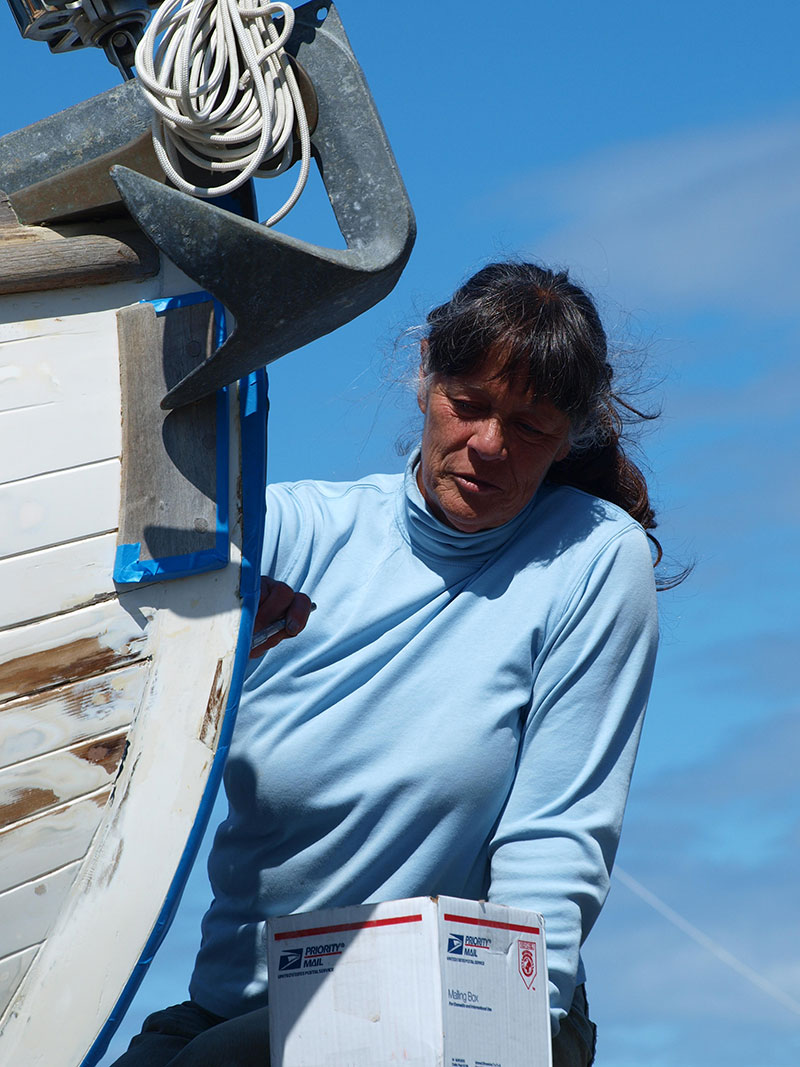 In those many messy, memorable ways one builds community in a town of indie marine trade makers, Diana Talley has been an anchor and, at times, a three-pound velvet sledgehammer. Straight-talking empath, sometimes boatyard agitator, and salty raconteur, Diana has been a listener, planner, leader, and mentor to many—especially to women entering the trades or DIY boat owners.
In those many messy, memorable ways one builds community in a town of indie marine trade makers, Diana Talley has been an anchor and, at times, a three-pound velvet sledgehammer. Straight-talking empath, sometimes boatyard agitator, and salty raconteur, Diana has been a listener, planner, leader, and mentor to many—especially to women entering the trades or DIY boat owners.As one of the first (and for too many years the only) woman shipwright and boat shop owner in Port Townsend, her workspace at her rented shop in the Boat Haven Shipyard—Taku Marine—served as headquarters for the “coconut wireless” for boatyard news, port politics, and career and boat owner transitions. Her shop was a birthplace and nursery to the nascent Port Townsend Marine Trades Association (PTMTA).
Born in Seattle, Diana took off for California “with a flower in her hair” after high school. Fate led her to Gate 3, Sausalito, where a boatbuilder named Ray Speck was framing up a 16’ Sid Skiff. She wrote: “It’s like looking inside a body still being formed and seeing the future it will become. I’d never looked at a boat before. A lightning bolt hit me. Humbled. This was something I had to learn to do. For 45 years, I blessed or cursed Ray every working day.”
The guys at Sausalito Shipwrights invited her to join their “co-op” while she learned the trade. Massages were the tool she brought to the partnership. She lived on the back of a flatbed truck near the shop until she headed back north to cool, green Washington where she found love, adventure, and work as a commercial fisherman.
In 1990, she was chomping for change—to be her own boss. Diana moved to Port Townsend from Ocean—a 38’ wood fishing boat she co-designed and built with her daughter’s father on Bainbridge Island. Fellow fisherman, Rick Oltman, offered her a boat bunk in Point Hudson while she worked her first job. She said Rob at Landfall “kept me alive with a running tab.” Jack Finney and Don Fauth on C dock in Boat Haven let her live on their boats when they were away at sea.
She stayed on different boats for about a year until she got her own boat, Scandia—a Kettenburg 38—restored and in the water. Her daughter, Kashmira, then came to live aboard with her. “Because of all these people, I was able to get a foothold. I couldn’t have survived without their generosity.” A gift she, in turn, gave others.
While working on a boat in 1994, she met Rick Petrykowski, the last and longest love of her life. “Strong like ox, smart like tractor” she wrote in his obituary. Together, they brought a balance of counsel to all who entered their shop. Far more than boat projects, although there were many, Taku was a shop where work mixed with conversation that left everyone thinking about far more than ourselves, far more than this town, state, and nation—yet, equally aware that everything we do locally has an impact on the wider world.It was in that spirit of local action and thoughtful generosity that Diana served on the board of Wooden Boat Foundation, Chamber of Commerce and Port advisory committees; spoke at She Tells Sea Tales events; ran as a candidate for Port Commission; served as Shipwrights’ Regatta Goddess, presented as Festival faculty, and co-founded the PTMTA. The truth is she helped us all—to grow, fight, give, forgive, and grow again.
Boatbuilding & Design presented by WoodenBoat Magazine: Jim Franken
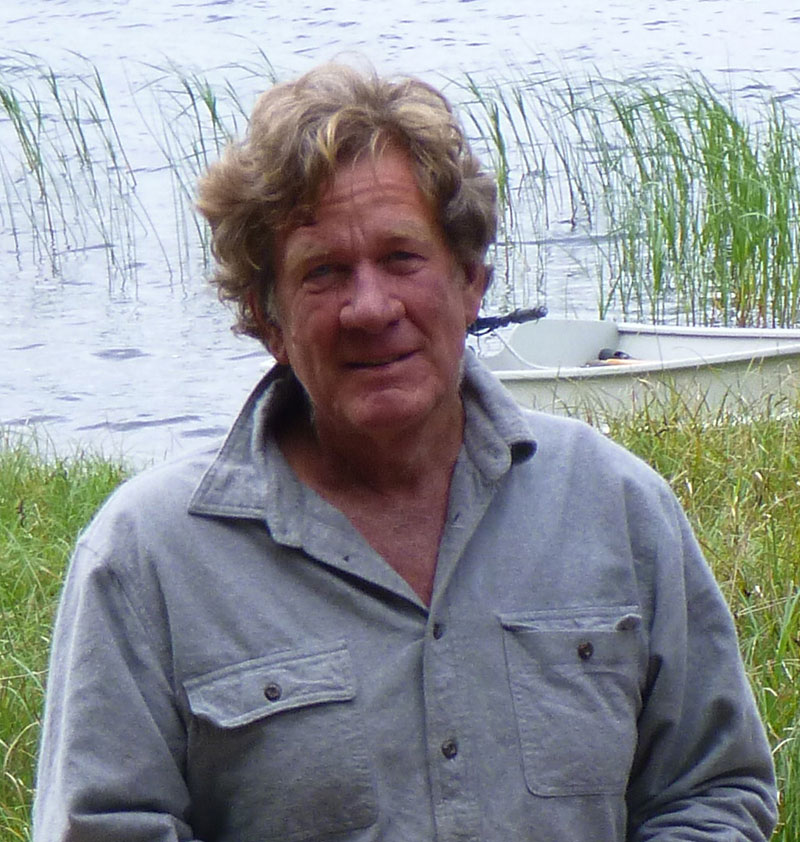
Jim Franken grew up in Newport Beach, California, in the 1950s surrounded by some of the most beautiful boats in the world. His grandfather, who loved boats, built row boats, sailboats, paddleboards, and sailing models for his children in the ‘20s and then for his grandchildren in the ‘50s.
In 1960, when Jim was thirteen, his parents sold everything, and the family took off on their 48’ yawl and headed for the South Pacific. This is when Jim started drawing boat lines and studying principles of yacht design. Jim designed and built his first boat—a 20’ catamaran—in 1963 and spent the next 15 years racing, cruising, and delivering boats in California, on the west coast of Mexico, Central America, throughout Hawaii and French Polynesia. In 1978, his desire to get more involved with boat building led him to Port Townsend in time for the Second Annual Wooden Boat Festival. Jim met Earl Wakefield and his family at that Festival; they were just starting Admiral Marine and offered him a job.
In the summer of 1981, Bob Prothero approached Jim to teach lofting and design at the Northwest School of Wooden Boatbuilding. In addition to teaching, Jim designed several boats which were built by the school for customers including the gaff cutter Bryony. In 1987, Jim started his own design and lofting business and subcontracted to Admiral Marine and a variety of yards throughout Puget Sound and BC. His design and building experiences range from a 28’ ocean-crossing rowboat to a 161’ mega-yacht with an amazing variety of projects in between.
Jim continues to work in the industry on a limited basis and enjoys when an interesting and challenging design project comes his way. In Jim’s spare time, he’s building a 24’ trailerable outboard cruiser for camping and continues to draw boats for fun and peace of mind. He is a patient and thoughtful guy who is always willing to share his experience and knowledge with fellow boat lovers.
Lifetime Achievement: Jake Jacobson
Profile by Daniel Joram
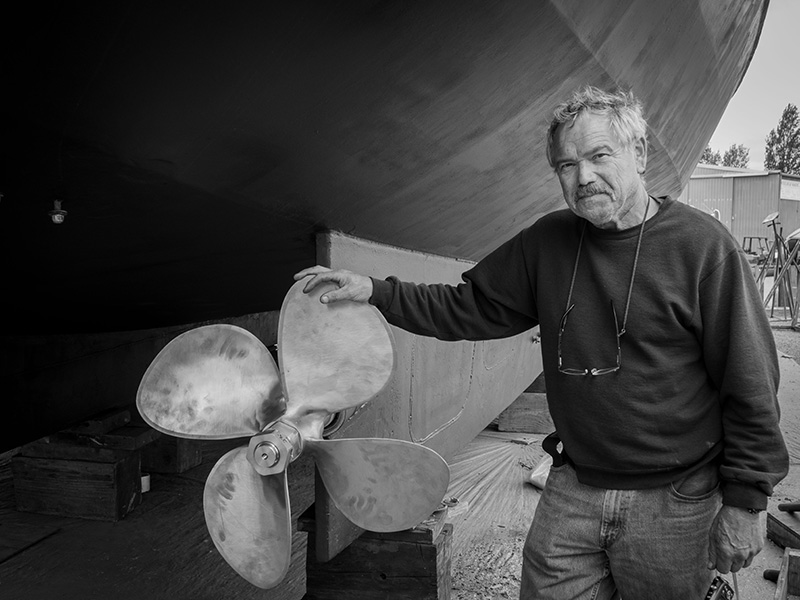
As a smart and self-determined young man, Jake was drawn to boats. He learned from working at Uniflite and with others on the Bellingham waterfront. He sailed his smart sloop, Hard Alee, to work in Sitka and on adventures along the BC coast and Haida Gwaii. Though he had considered applying himself to the wonders of academia, he would not have been content confined to those halls.
Jake went to Aberdeen to work on building the new tall ship Lady Washington as a shipwright. He eventually became her captain and assumed the mantle of reluctant educator and mentor for several generations of shipwrights and sailors in the Pacific Northwest and beyond.
As captain and crew, Jake sailed the west coast many times on boats including the Lady Washington, Hawaiian Chieftain, and Kaisei, with epic voyages from Hawaii to Florida via the Panama Canal on the Schooner Lynx, to Europe and back on the HMS Bounty, and on the HMS Endeavor for her re-enactment arrival in what we call New Zealand.
As a shipwright, Jake worked on everything from tall ships to tugs, often in the famous West Coast wooden boat community of Anacortes. From building the Lady Washington, recaulking the CA Thayer at San Francisco Maritime, to working on his friends' boats for embarrassing low wages, Jake tackled all projects with strength and patience. Through it all, his message was always clear—keep the traditions and knowledge alive, teach others, and pass the torch on. Work hard when it's time to work and drink a cold one when it's time to rest.
Jake was a lifelong learner; he was never content with the answer "that's just how it works", and he would seek to become knowledgeable in all subjects that came across his path. He valued mentorship, a good joke or story (especially one that ”punched up”), and was a good shipmate, always.
He led by quiet, competent example; he could do any job he asked of his crew, he was outwardly fearless in the face of trouble, and he left room for everyone under him to grow to their potential. This community is better for having Jake around. Many of us can reach back for his reassuring guidance as we face our own challenges. Many of us hold dear Jake’s way of paying knowledge and humanity forward.
He would have also hated the fact we spent this long talking about him.
Boatbuilding & Design: George Buehler
George Buehler began designing boats in the 1970’s during the revival of interest in wooden boats and wooden boatbuilding. His approach was always from the point of view that it was more important to ‘get it done’ than it was to fret over the nuances of the building process. His design career started as a matter of designing a boat that he himself could build, and sail and extended with much experience and years of honing into a broad swath of devotees and fans. He believed a boat is a statement of expression and needs to be valid for each individual. It is with much sadness that this award is given posthumously as he truly deserved to have the honor and accolade while he was still alive, but fate stepped in and dictated otherwise. He is an author of multiple books, and you would need to search far and wide to find a more outspoken and passionate proponent of boats and boat design.
Yacht Design and Construction: Carl Chamberlin
Carl has been a mainstay around the Port Townsend waterfront for many years and was around for the early days of the wooden boat revival in the 1970’s. He is an excellent designer with a hand and eye that shows off his many years of diligent study and working in the design field. It is noteworthy that when the renowned designer/builder George Calkins was getting ready to build his dream motorsailer in the late 1970’s, he reached out to Carl for help in the design and building plans. Carl has also had several projects that the Northwest School of Wooden Boatbuilding has built in years past. Carl is a quiet and calm man with a demeanor that up front would never hint of the reserve of intelligence and talent contained within.
Community Spirit and Culture: Jim (Kiwi) Ferris
Over 32 years ago, with a few sticks of wood and a couple of tarps, Jim “Kiwi” Ferris and the late Charlie Moore started Edensaw Woods in Port Townsend. Now, three decades later, the business has grown into 80,000 square feet of warehouse and nearly 50 employees in two locations. Kiwi has literally been one of the table legs that has helped hold the wooden boat industry in the Northwest. Wood from Edensaw can be seen on boats all over the world, from multi-million dollar yachts to small kayaks and canoes, as well as homes, furniture, and much more. His influence, mentorship, and leadership in the boat building industry is unparalleled and unequaled in the Northwest.
Maritime Hall of Fame: Brion Toss
Master Rigger Brion Toss is best known as the author of The Complete Riggers Apprentice, first printed in 1984 and considered today an authoritative text on the subject of rigging. Brion’s career as a master rigger was born from an obsession with knots over 30 years ago, which led him to work with some of the finest traditional riggers in the world. As his expertise and passion for the art of rigging grew, Brion’s education was taken to the highest levels, rigging everything from tiny daysailers to huge square-riggers. With his extensive experience, Brion is able to take the ageless wisdom of traditional rigging and apply it to the materials and applications of today, pursuing the challenge of designing the ideal rig—that unique combination of details best-suited to a particular boat and its particular crew.
Boatbuilding & Design: Bob Perry
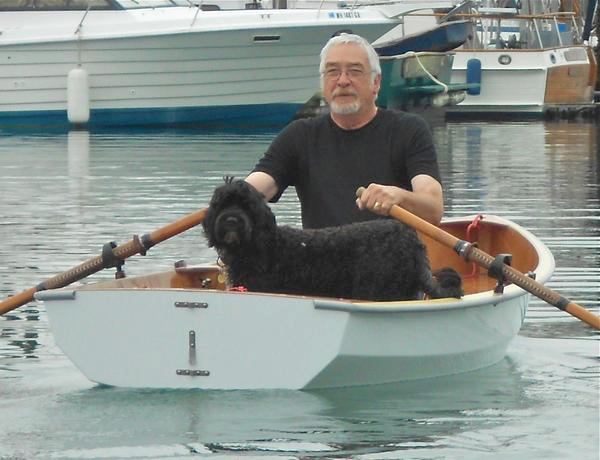
“You have made my boyhood dream come true,” says Bob Perry. Grateful to his teachers, for opportunities, and for the sailors who cherish his work, Bob designs yachts that are grateful for water and wind. Robert H. Perry was born in Ohio and spent his childhood in his mother’s native Australia. At age twelve, he joined his parents on a month long voyage by Liberty ship back to the States. That experience aboard shaped Bob’s future career and plunged his imagination into ships and the sea. By eighth grade, in Seattle, Bob was immersed in the study and practice of sailing. He decided to become a yacht designer while still in high school. An introduction and lunch with Bill Garden, when Bob was just fifteen, set the course. Bob attended Seattle University and moved directly into design work shortly thereafter. Through his 20’s Bob worked under a number of master designers in Seattle and Boston, finally opening his own office on Shilshole Bay in Seattle in the early 1970s.
The Valiant 40 began production in Bellingham in 1973; the yacht was a runaway success and an instant classic−eventually over 200 were built. Owners were (and still are) thrilled with a versatile ocean cruiser that quickly proved fast, comfortable, safe, and capable of both circumnavigation and performance racing. Bob’s third client wanted to build CT54 boats in Taiwan, so beginning in the late 1970s Bob began a cooperative design/build relationship with the Taiwanese maritime industry. This partnership lasted for over two decades and produced hundreds of his yachts. The Valiant 40 was quickly followed by the Islander 38, Tayana 37, and Baba 30; design after design−many hundreds, eventually−flowed from Bob’s desk and changed the face of sailing in the Pacific Northwest and around the globe. Today it’s said that there are more of Bob Perry’s designs cruising the world than those of any other designer.
Bob is certainly not retired. He’s still designing new boats of all kinds, and provides fee-based consultations for serious boat shoppers. One recent innovative racer was built at the Northwest School of Wooden Boatbuilding in Port Hadlock: the Perry Sliver Class Daysailer 62 Francis Lee, launched in 2014, proved a head-turner and dominant racer. Bob enjoys crewing this successful new design; scratch that−Bob likes to drive her any time he’s aboard, which is often, thanks to a twenty year friendship with her owner. Bob and his wife live in a beach cottage on the North Sound and he enjoys time on the water in his Boston Whaler. He’s still in favor of sailing well to weather and grateful that his career has brought him so much pleasure. He designs in order to put water and wind to their best use: “It’s not magic. Just physics.” The WBF judging team acknowledges Bob Perry’s lifetime achievement with gratitude for keeping so many of us fast, comfortable, and safe.
Community & Spirit: Marty Loken
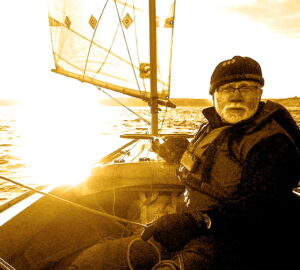
Marty Loken says he’s best known as “an out-of-control collector of project boats.” Marty dedicates his life to getting people and boats out on the water and he’s mastered this feat countless times over his 75 years. Over 200 boats owe their restored and renewed lives to his craftsmanship and vision: he’s built dozens more boats from scratch. At his shop in Nordland, WA, he makes sure that worthy older wooden boats stay on the water. Marty and his wife Marijiann (Mo) Moss say the place is known as “the boat farm”… a sort of halfway house for good old boats that need to be saved. In just the last year Marty built a16-foot Oxford Wherry and restored four classic boats while serving as Associate Editor of Small Craft Advisor magazine and Editor of Duckworks Magazine: this is what he calls “semi-retirement.”
Marty’s love of water and boats began almost before he can remember. It’s been said he must have been “born in a boat.” His first rocking horse was actually a boat with handles. Marty grew up in the Scandinavian neighborhood of Ballard, WA, surrounded by fishermen, boats, and water. His father and grandfather designed and built boats; Marty built his first boat at age ten, and another one a few months later. In high school he developed an interest in writing and was soon launched on a ten-year general reporter job with The Seattle Times. Family connections led him to Alaska where he spent almost a decade editing regional magazines, writing books, and honing photography skills. Marty’s love of photography (still a passion) led him to create a image management business, which he tranplanted to Seattle in 1980. This successful venture was sold to Getty Images of London in 1994 and Marty “retired” from Getty in 1997.
Boats became a livelihood in 1997, when Marty took his wooden boat building and restoration skills to work after purchasing Seattle’s Wooden Boat Shop retail store and launching The Restoration Shop, specializing in full restoration of customers’ vintage boats. Two years later the business moved to Whidbey Island. Marty met Mo at the Whidbey Island Writers Conference shortly thereafter: four years later they together moved boats, shop and all to Marrowstone Island.
Retirement began anew for Marty in December, 2013, when he shifted to restoration of his own boats, rather than those of customers. He now had time to turn back to writing, photography and public service as wellto the great benefit of the maritime and local community. Marty organized the annual Pocket Yacht Palooza in Port Townsend, the largest gathering of small boats on the West Coast. He had served on the board of The Center for Wooden Boats (and is a lifetime member), now volunteers for the Wooden Boat Festival, and has served in numerous leadership roles for classic boat and professional publications and organizations.
Marty has loved to row and take on boating adventures since childhood and most recently was an inaugural SEVENTY48 racer aboard a Colin Angus Oxford Wherry as TEAM GEEZER. Keep an eye out at the Wooden Boat Festival for FOTO, the 1953-designed raised deck outboard cruiser Marty recently restoredMarty and Mo enjoy FOTO’s role as the official Photo Boat of Small Craft Advisor Magazine, based in Port Townsend. Restored to glory and active use, as all good old boats deserve, Marty’s boats are a legacy of lifetime achievement.
Boatbuilding & Design: Tim Nolan
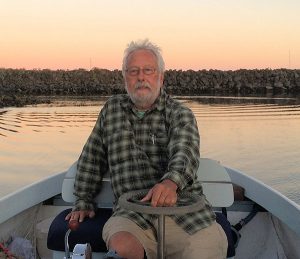
A native of Southern California, Tim Nolan has been involved with boats since 1958, when he bought a sailing pram at the age of 11. Growing up he surfed the local beaches of Palos Verdes and worked as a deckhand on excursion and sport fishing boats from San Pedro before enrolling in the engineering program at the University of Michigan. After graduation he worked at Global Marine in Los Angeles before serving in the Peace Corps for 2 ½ years, teaching Naval Architecture in Guayaquil, Ecuador. He then settled in the northwest in 1974.
In 1975 he dropped out of commercial design to do what he loved best: working on boats. He worked as a shipwright for several years while continuing to design pleasure boats, including the Cape George 31 Cutter, of which over 50 were built by Cecil Lange and Sons in Port Townsend.
For a time he returned to commercial work, designing fishing boats, barges, and tugboats, including the Lauren Foss and Corbin Foss, the most powerful in the Foss fleet. In 1985 he moved to Port Townsend and consulted for Admiral Marine Works, working on four large composite yachts.
Tim began an association with Ed Monk and Son in 1989 that continues to this day. Tim’s contribution to the design process is primarily structure, and he plays a strong role in managing the plan set development. He is probably best known for his freehand perspective sketches that condense information and speak directly to the builder. He likes detail and enjoys sketching them in a way that looks like they want to leap out of the paper and into the boat.
Today Tim Nolan Marine Design continues to provide quality design services to a limited number of customers. Tim owns a total of 137 boats, and when he’s not working on his boats, you might find him playing his fiddle or standup paddle boarding.
From the Selection Committee: Tim Nolan is a well-known character in the maritime scene around Port Townsend. He is a letter-perfect candidate for the 2017 Lifetime Achievement Award for Boatbuilding and Boat Design. He has spent his life working both boats and boat lines into something magical on the water. His work carries the scope of breadth from the smallest dinghies to large ocean motor yachts, and he has backed it all up with the eye of an artist and the science of an engineer. He is a rare talent in the marine industry, and we are very pleased that he has agreed to be our recipient this year.
Community & Spirit: Jim Blaiklock
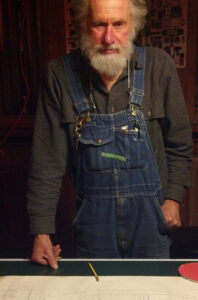
Jim Blaiklock has been messing about in boats since he was born, having grown up in a sailing family in New Jersey and Sag Harbor. As a beloved member of the Port Townsend boating community, he was a founding member and officer of the Port Townsend Marine Trades Association.
He drew standing room only crowds at several Festivals with his entertaining, knowledgeable demos on dutchmen and butterflies. He ran the Kids’ Boatbuilding booth at the Festival for years, designing the templates, cutting the hulls, procuring supplies all year long, and then staying after the Festival on Sundays until every scrap of sail, string, globs of glue, and nails were picked up, using a magnet to find errant nails. He's always been about doing every job completely, and advocated for sweetening the pot, as he'd say—do more than you were hired and paid to do.
He volunteered as the Boatshop Manager for the Wooden Boat Foundation for many years before finally being hired in that capacity. He picked up donated boats from around the Sound, and then sailed them back and fixed them up to be sold to raise money for the Foundation.
He was a beloved mentor to the scores of Gray Wolf Ranch volunteers that worked in the shop; many recognized his impact on their lives by inviting him to their Gray Wolf graduation ceremonies and dinners as a specially honored guest. Those he mentored spoke of learning more about life from him than anywhere else. He taught them that "slow is fast," meaning take your time and do it right so you don't have to do it over.
Teaching sanding, varnishing, and painting was his way to teach about how to live life with finesse—the word he used and the students cherished.
From the Selection Committee: Jim Blaiklock has been a part of this community since the first Festival, when he rode up on a motorcycle from San Diego, where he was a shipwright. He eventually bought property and moved here.
After a few years as a volunteer, he was hired as the Foundation’s Boatshop Manager. He mentored kids and adults in the Cupola House Boatshop. Together with volunteers, he fixed up a Point Hudson building as a shop with larger capacity.
His patient teaching style, seasoned experience, and unconditional generosity are legendary. His gentlemanly ways, friendly charm, and pragmatism have endeared him to scores, if not hundreds, of volunteers, young and old alike, who’ve started or apprenticed in Port Townsend. As a mentor, teacher, and loyal friend, Jim exemplifies every aspect of this award.
Shipwrights Hall of Fame: Miguel Winterburn
The Wooden Boat Foundation will also be honoring Miguel “Mike” Winterburn with a special Shipwrights Hall of Fame award this year. From his start shaping surfboards to a career building boats, Mike is known as a craftsman without equal, seeking to create beautiful work with an emphasis on function. Many shipwrights in town today consider him one of their first mentors. Local shipwright Brian Wentzel shared, “For me he had a subtle way—always there to answer a question or suggest a path, but never without the reasoning behind it. He often carefully watched others make mistakes, but never interfered. To truly learn, he believed that we needed to make our own mistakes. Then he’d offer a quick smile and a suggestion for how it could be corrected.”
Boatbuilding & Design: Tad Roberts
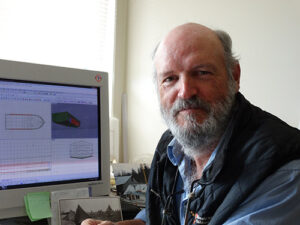 Born in Pender Harbour, BC in 1955, Tad was immersed in coastal culture right away. Roads were few, all transportation and work involved boats of various types, but almost all were wooden and of unique West Coast design. A fifth-generation British-Columbian, Tad’s entire family lived and worked on boats; Tad became involved in logging, log towing, and commercial fishing as a young man, and this led to designing and building small steel workboats as well as a few wooden sailing vessels.
Born in Pender Harbour, BC in 1955, Tad was immersed in coastal culture right away. Roads were few, all transportation and work involved boats of various types, but almost all were wooden and of unique West Coast design. A fifth-generation British-Columbian, Tad’s entire family lived and worked on boats; Tad became involved in logging, log towing, and commercial fishing as a young man, and this led to designing and building small steel workboats as well as a few wooden sailing vessels.
Tad had always maintained a strong interest in yachts, both power and sail, and when the opportunity arose to move to Maine, he went. After a semester at Maine Maritime Academy (Yacht Design Institute) he joined the Bruce King design office in 1987. In the next 14 years there he worked on everything from 10’ dinghies to 180’ sailing yachts. He had a hand in everything from production fiberglass power and sailboats, including the Hinckley Picnic Boats and Sou’wester 70, to the 80’ cold-molded commuter Liberty.
In his spare time he built a small farm near Whitefield, ME with his wife Carie McAlister, raising milk goats and two sons.
Leaving Maine in 2001, he returned to Gabriola Island, BC to open a one-man design practice. There his work has focused on new design of classic types, the Lake Union Dreamboat and double-ended trollers, as well as the refitting of large motoryachts. His life-long interest in small traditional boats led to an 8-year term on the Board of Directors at the Silva Bay Shipyard School, as well as organizing and managing the Shipyard Raid for 5 years.
Today his office is designing new 60’ and 65’ cargo schooners, as well as a 32’ double-ended troller for Alaska. For the past 8 years he’s been living aboard and slowly restoring Blackfish, a 50’ Urry Brother’s designed and Northwest School built ketch.
Tad feels quite strongly that he’s part of a long line of local PNW designers with regional leanings: Leigh Coolidge, Ted Geary, H.C. Hansen, Tom Haliday, Frank Fredette, Ed Monk Sr., and William Garden have all influenced his work. Lesser-known BC designers like the Urry Brothers and Robert Allan have also exerted influence. Important too has been the work of hundreds of individual boatbuilder/designers, the Wahls and Groops of Prince Rupert, the Farrells and Gooldrups of Pender Harbour, and the Remmems, Vesteads, and Gronlands of the Fraser River. “All these builders designed and built wooden boats that are both beautiful and efficient, which is something I hope to encourage and continue,” Tad concludes.
Community & Spirit: Ted Pike
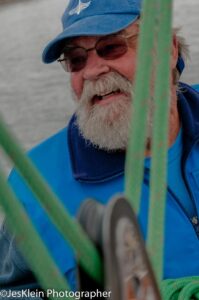 Ted Pike was an integral part of the Wooden Boat Foundation and Festival for all of the 26 years that he was part of the Port Townsend boating community.
Ted Pike was an integral part of the Wooden Boat Foundation and Festival for all of the 26 years that he was part of the Port Townsend boating community.
Becoming a sailor at age 14 was a life-altering experience for Ted. He realized then that it could become an abiding passion and one that could (and did) change the direction of his life. Traveling the world as a young man, visiting many spots in the US, Europe, Eastern Asia, he settled for many years in Australia where he sailed continually and learned the art of crafting wooden boats and wooden surfboards. Returning to the US with many wonderful stories, he continued honing those skills in Avila Beach, Ventura, San Diego and, finally, Jefferson County. With the first boat he built, Cuca, an Edson Schock design, he introduced his future wife and children to the wonders of sailing. The second boat, Brisa, provided them with some extensive cruising off the California Coast and into Mexico. Bringing Brisa to Port Townsend introduced them to the joys of sailing in the Northwest. The purchase of Annie Too begat Brisa Charters and Ted's beginning as a U.S. Coast Guard 500-ton licensed Captain. Annie Too sailed for nearly 20 years from Orcas Island and from Port Townsend.
For 20 years Ted was a vibrant, enthusiastic employee of Edensaw Woods and traveled the country and Canada spreading information, cheer and love, returning with many, many uplifting stories. Wherever he went he made many friends, treating them with great respect, encouragement and caring and giving his famous, huge "Ted Pike" hugs. For several of his last years he also worked for WoodenBoat Magazine, continuing his encouragement, success and hugs.
He was actively involved with the Wooden Boat Foundation and Festival, the Port Townsend Sailing Association, Northwest Maritime Center, Port Townsend Marine Trades, Jefferson County 4-H, Orcas Island Sailing Association, Jefferson Teen Center, Centrum Foundation and WoodenBoat Magazine. His advocacy for the youth in his community was admirable. His participation with wooden boats, boat owners, marine trades, fundraising, regattas, and speaking engagements in Port Townsend and other communities has been deeply appreciated.
As most know, Ted went on to other seas in August 2015. While he is greatly missed by his family, his friends, and his community, all are grateful to have known the gifts he gave us during his lifetime.
Ted was an integral part of the Lifetime Achievement Awards for the past many years. He helped in the selection of the recipients, assisted in putting the program together each year, and often spoke at the event, managing to be both heartfelt and humorous. We tried for many years to honor him with the Community Spirit & Culture award, which he always refused. We are sorry he will not be with us to receive this award; few more profoundly embodied Wooden Boat Community Spirit & Culture than Ted.
Boatbuilding & Design: Edward "Ted" Brewer
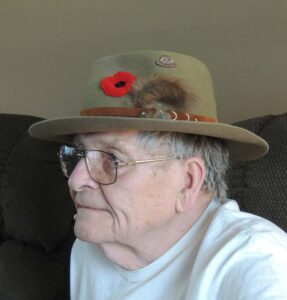
Ted was born in Hamilton, Ontario in 1933. By 1957, he was a Lieutenant in the Canadian Army, but resigned his commission in order to return to his first true love, boating. He started off as a yacht broker with George Cuthbertson, who later founded C & C Yachts. At the same time, Ted kept busy working on his West Lawn School of Yacht Design course.
His career progressed with the help, guidance, and education that came with working alongside George, and with a man named Dick Telford, a boat designer, builder, mentor, and friend. Several years later, in the late 1960s, Ted took an opportunity to move to Connecticut and work for A.E. “Bill” Luders Jr. as an assistant designer. With Bill he worked tirelessly on everything from 5.5 meter sloops, 12 meter America’s Cup racers, ocean racing yachts, & power boats.
In 1967 Ted found himself in Maine, still doing all of Luders’ drafting. In partnership with Bob Wallstrom he produced over 100 custom production designs. In the mid 1970s, Ted pioneered his wildly successful, well-known radius bilge method of building metal hulls. In 1979, Ted moved to Washington State and over the next 20 years would produce 160 more designs.
In 1999, Ted and his wife Betty returned to Canada and settled on Gabriola Island, BC where he designed a few more custom yachts, sold stock plans, wrote for boating magazines, and donated time lecturing at Silva Bay Shipyard school. In 2006 they moved to Agassiz BC.
In addition to completing over 270 designs, Ted has written 3 books. One of them, “Understanding Boat Design” is now in its fourth edition and has been a popular design primer for 30 years.
He is now mainly retired, but has had a career full of passion and adventure, and is thrilled to be receiving the 2015 Lifetime Achievement Award in Boatbuilding & Design.
Community & Spirit: Julian Arthur
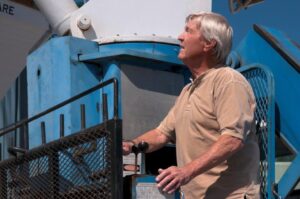
Julian Arthur grew up in West Seattle during the 1950’s and 60’s and started working on boats shortly after high school. What began as a few isolated projects quickly turned into a profession as Julian and other members of his family saw one opportunity after another arise in the world of boatbuilding.
Julian's father, Ben Arthur, first purchased a 50’ steel vessel, to refurbish and use as a charter boat in Westport during the 1962 World’s Fair. He soon decided they could build their own fiberglass boats, so he started a company and opened shop in Burien, WA.
Julian worked on the boats during the winter months and spent his summers traveling across country professionally racing flat track motorcycles.
In 1968 the company was looking to change locations. They stumbled across a little town where the land was cheap and largely undeveloped, and they moved their business across the Puget Sound to Port Townsend. Skookum Marine, as the business was called, built a shop (the shop that is currently occupied by Goldstar Marine) and began production of custom sail and powerboats from 28 to 70 feet in length. There were no docks at that time in the marina and Julian remembers the ferryboat, Defiance, was parked right outside the shop. It was a good time to be building boats, and Skookum Marine built over 400 of them over the years.
In l980 they built a large shop on Workman Road and would truck the hulls down to the water to be launched. Julian’s wife Sue joined him in the business and they continued to build fishing vessels for Alaska until 1989, but by the end of the 80’s they had decided to downsize, and they closed doors on Skookum Marine for good.
At this point Julian began transitioning into the occupation that anyone affiliated with the Port of Port Townsend knows him for today. He bought a truck-mounted mobile crane and before long Julian Arthur Crane Service was born. Julian has been operating the crane in the port for 25 years and by now has literally taken thousands of masts and engines out of boats. Knowing the importance in every mast pulling/replacement, he honored the “big deal” that it was with caution, care and experience, and has helped many people in the process. He has run into sailors as far away as the Virgin Islands who instantly recognize him as the guy who, “put the mast on my boat in Port Townsend just a couple of weeks ago!”
Julian likely wouldn’t have predicted it himself, but standing ahead of him in 1962, alongside a lifetime of adventures, a beautiful family, and lots and lots of motorcycle racing, was a 50-year career in the marine trades.
Boatbuilding & Design: Stanley Bishoprick
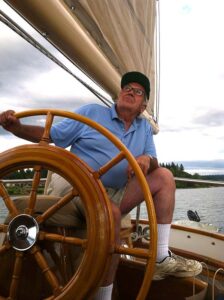
Stanley Bishoprick was born March 23, 1937, in Portland, Oregon. Vancouver was his home except for his toddler years in China, and college years at Oregon State University in Corvallis where he earned bachelors degrees in forestry and business. He took graduate music studies at Eastman School of Music in Rochester, New York. There, in 1963, he met his wife Nancy McCracken while both performing in Verdi’s Aida.
Stan established Exterior Wood, Inc. in 1977. With this success and his ever-ambitious drive and curiosity, he formed Windy Ridge Farm, a thoroughbred racehorse training and breeding facility.
In 1994 he founded a classic wooden boat building business, Legendary Yachts. Stan “retired” in 1996 to sail his 72’ ketch, Radiance, (sister-ship to Ticonderoga) the vessel that launched his yacht company. He took the family on a three-year ocean voyage spanning half the globe. Guided by Stan’s vision, Legendary Yachts built many breathtaking wooden sail and power boats. His passion for building these wonderful vessels was only outweighed by his love of being on the water aboard them.
As a true Renaissance man, he was an enduring supporter of music and the arts, becoming the president of the board of the Portland Opera Association and also a member of the board for the Vancouver Children’s Opera. He was a cantor in several Jewish temples, past choir director at First Presbyterian Church, sang with Portland Opera, Bravo!, and Young Audiences in many musicals and plays in the Portland/Vancouver area over the years. Stan even donned costumes and performed alongside his granddaughters in several ballets, supporting their love of dance.
One of his most recent ventures included raising registered Angus beef at his farm. Tragically, Stan died on died October 25, 2013, at the far-too-young age of 76. Members of his boat crew said they could not believe Stan was gone. “We were just chasing cows with him yesterday.”
Stan was larger than life, and an inspiration to those who knew him, daring us all to think big and dream. He left a giant hole in many hearts and will be sorely missed by so many. He was a caring, and loving man with great faith and warm hospitality. Like the yacht company name, Stan was legendary.
Community & Spirit: Ed Barcott
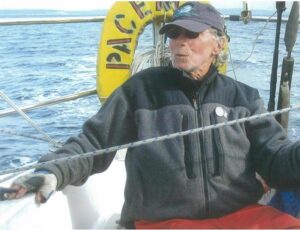
Being on the water is in Ed Barcott’s blood. Born into a fishing family in Anacortes, he was working on the water by age 11. He spent many memorable years in the 1940’s and 50’s seining the waters of Puget Sound and Southeast Alaska. Later, the experiences of both WWII and Korea prompted Ed to attend Western Washington University. In 1958 he came to Port Townsend to teach at the Washington Diagnostic & Treatment Center at Fort Worden. He also met and worked with Jim Daubenberger (Daubie) at his clothing store on Water Street. Daubie introduced Ed to sailing, and he was hooked. Ed sailed with and learned from Daubie for over a decade, then bought his own boat, a Pearson Renegade, which soon gave way to his current “Pacemaker,” a Cal 33, which Ed has skippered on innumerable races and cruises. Following in Daubie’s footsteps, he has and continues to enthusiastically share his knowledge and love for sailing with family, friends, crew, and even competitors.
Community & Spirit: Jim Daubenberger
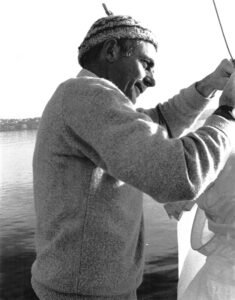
In 1937, at the age of 13, Jim Daubenberger wanted to go sailing. He borrowed his dad's pup tent to use as a sail, lashed a couple of poles together to fashion a rig, and rented a row boat on Discovery Bay, where he rowed upwind, set his rig and sailed downwind using an oar for a rudder. Many years later, in 1959, with a young family, his dream of sailing was rekindled: Jim bought his first of many boats, an 18’ Seagull-class sloop. With no instruction, he began what became a lifelong passion. In 1962, in collaboration with his lifelong friend and sailing partner, Glenn Abraham, Jim started a sailing school for kids. For 25 years Jim and Glenn taught hundreds and inspired thousands.
Boatbuilding & Design: Glen Witt
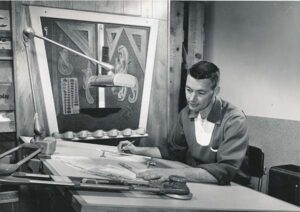
Glen Witt and his brother, Elbert started building boats when Glen was still in high school. Plywood was virtually unknown in those days, since Glen was born in 1918. The pair rabbeted stems, spiled planks, and used what they thought were proper building procedures. The plans available in those days weren’t designed for the first time builder.
Since it was the Depression era, the brothers couldn’t afford to build boats, but somehow they did it anyway. White oak was scrounged from old table leaves for the frames as it cost virtually nothing from junk furniture stores. It took a long time to get that old finish off, but time they had, money they didn’t. The planking had to be mahogany and took lots of mowing lawns and delivering papers to procure. Each plank was fitted with care. The seams were spaced oh so uniformly. The screw holes were plugged or blind-fastened, and spaced so precisely from the edges and each other. The filled and stained mahogany planks were given numerous coats of varnish, then hand-rubbed with pumice and finished with rotten rock and rubbing oil. Eventually marine plywood was developed. But you couldn’t find a set of boat plans that showed how to use it. In fact many people didn’t even believe it could be used to build a boat. Perhaps ignorance proved to be the best teacher after all. As there were no guidelines on the “right way” to use plywood, they had to discover them for themselves.
They went through a learning curve using proven or accepted methods of conventional boatbuilding. Most of these methods didn’t work for plywood, as they often found out the hard way. By this time a cadre of pioneer plywood boatbuilders had begun to form. They all built boats, shared experiences and used the craft they had labored so hard to make. Glen worked at a foundry at the time and was able to make much of the hardware needed for these boats from patterns he made. Glen and Elbert then formed Glenwood Marine to provide boat hardware such as manifolds, struts, prop shafts, rudders and other underwater hardware. The Glenwood name was created from Glen’s name and Elbert’s middle name of Woodrow. Today Glenwood continues to supply the hardware needed to complete many of the Glen-L designs.
During this time, Glen had taken up Naval Architecture and sought to fill the void in the marketplace by designing boats that were detailed and easy enough for the first time builder to complete. Thus, Glen-L Marine Designs in Bellflower, California was formed in 1953. Glen took his experience in plywood boat construction and developed a system that he felt would enable the first time builder to build his own boat with little or no experience. He understood that lofting the lines of a design would be an obstacle to builders, so early on he determined that full size patterns would be available for each design. The patterns sent to customers were hand-drawn on brown butcher paper, later they were blueprinted and today they are printed on a large format printer.
Glen-L initially offered plans and patterns through dealers. The dealers were able to add to their revenue of the plan sales by selling other hardware and fittings needed to complete and outfit the boat. The company also sold plans via mail order by advertising in the major boating magazines and even appeared on the cover of Popular Mechanics five times from 1957 to 1973.Glen has built numerous boats in order to develop a set of plans for the first time builder. Glen has also written 5 books: Boatbuilding with Plywood, Inboard Motor Installations, How to Build Boat Trailers, How to Fiberglass Boats and in 2008, Boatbuilder’s Notebook. In addition, he has created 7 DVD’s all of which he participated in every step of the way.
In the 1960’s, Glen hired a young boat designer, Ken Hankinson, who had experience in boat design for professional builders. The two produced numerous designs that live on today. When Ken ventured out on his own, his designs reflected Glen’s training and after he retired, Ken’s designs were readily integrated into the rest of Glen-L’s offerings. In the 1970’s Glen developed a line of RV plans and patterns for campers, trailers and fifth wheels. For many years, Glen-L provided aluminum skin kits and accessories to build these units in addition to the boat line until the oil embargoes of the 1970’s helped to drive up fuel prices. RV plans continue to be offered in their online store.
Today, Glen-L offers over 300 boat designs, fastenings, epoxy and fiberglass, boat hardware and other hardware which continue to be shipped around the world along with and lots of helpful support. Most of the business is done online and the Glen-L Boatbuilder Support Forum has blossomed. Various Glen-L boat builders organize get-togethers throughout the US and the first this year in Australia.
For 60 years, Glen’s plans have touched the lives of generations of builders all over the world. At 95, Glen is still designing boats and is actively involved in creating plans that enable the amateur to build their dream boat.
Community & Spirit: Marci Van Cleve
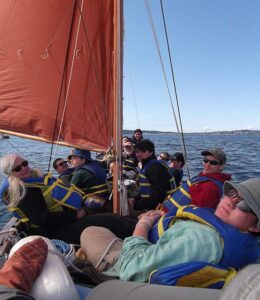
“What’s your passion?” is Marci Van Cleve’s first questions to students. As expected, passions range from marshal arts to computers, but Marci’s role as an educator in the Port Townsend and Chimacum School Districts is the same: inspire learning by cultivating curiosity and hands-on experience in the student’s interest areas. Marci encourages her students to take an active role in their education by first, articulating their passions and then helping them weave their interests into their own, individualized curriculum. This heartfelt and time-intensive approach is the saving grace for many of the county’s youth who otherwise may not have graduated. Marci’s bank of social capital is an essential ingredient in her recipe for educational success; innumerable mentors and community volunteers have been recruited by Marci to invest in youth by imparting their specific skills and knowledge. Marci connects youth and community together, everyone learns while growing as a person.
Now in her 30th year of teaching, Marci splits her time between Pi and OCEAN, the alternative public schools she co-founded within the two school districts. But Marci’s classes are just as likely to be held aboard a 25’ longboat, beside a lively salmon stream, or amongst a string orchestra as in the classroom. In 1996 Marci started the Puget Sound Explorers Program in partnership with the school districts and the Wooden Boat Foundation. With access to the water, she was able to help students develop leadership skills while gaining the confidence and calluses needed to enter the maritime trades. Building on the success of this marriage between public schools and the area’s maritime education facilities, Marci and her co-teaching expanded the curriculum to include boat building as the Puget Sound Voyaging Society in partnership with the Northwest School of Wooden Boat Building.
Always a champion of the underdog, Marci fiercely believes in the importance of a high school diploma and works tirelessly and with phenomenal creativity to help willing students achieve this life milestone. Along with the traditional Washington State learning requirements, Marci teaches the deceptively challenging “soft skills of industry” which start with “show up and be prepared.” She sees first-hand how challenging these critical skills can be to kids without ample resources or support. More immediately, Marci makes it her responsibility to provide “sea stores” (i.e., healthy snacks) to students, especially in the floating classroom where crew morale matters and hungry kids can’t row. Marci’s generosity is selfless, her creativity boundless, and her enthusiasm unflappable.
Looking for their own piece of heaven, Marci and her husband Steve put down roots in 1974 on a 20-acre farm on Marrowstone Island called Fiddler’s Green. In her time away from school, Marci is a prolific poet and deadly cribbage player. Steve is a retired Tug Boat Captain and a worthy cribbage opponent.
Boatbuilding & Design: Sam Devlin
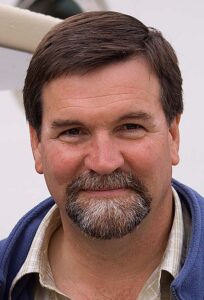
In 1974 a young Sam Devlin was sitting in the galley of an old, 1898 tugboat in Southeast Alaska contemplating the big question of what to do with his life. With a cup of strong black coffee and a copy of the very first issue of a new magazine called “WoodenBoat” in hand, an answer took hold.
For the first time in his life Sam contemplated becoming a boat builder. A short three years and University of Oregon degree later, he started on his first boat. A self-described average guy with a pervasive love of boats and water, Sam started Devlin Designing Boat Builders in Eugene, Oregon, soon moved to Eld Inlet in Puget Sound and most recently to a larger shop in Olympia, Washington.
Devlin designs and builds boats using a composite construction method he’s helped to pioneer known as “stitch-and-glue” which, according to Sam, combines the best of both worlds: wooden boat building with modern epoxy technology. He is a tinkerer, tending towards simplicity of design that carries a touch of whimsy.
Sam just rounded the horn of his 35th year as designer and boat builder, having built 416 wooden boats, all but four of his own design, and sent his boats or designs to over 69 countries and all 50 states. (For TV’s NCIS fans, the boat Gibbs works on is a Devlin boat.) Devlin has built an impressive design collection that includes tiny rowing and sailing dinghies like the Pollywog and Guppy, as well as larger sailboats like the 23-foot Arctic Tern sloop, the sleek 36-foot cruising yacht Peregrine, and the 42-foot Oysta motorsailer. The most recent project for Sam’s company is a 48 ft. long powerboat.
In addition to his boat building and design career, Sam is the author of the best selling book Devlin’s Boat Building and many articles on boatbuilding and boats, and stars in a video on wooden boat construction titled “Sam Devlin on Wooden Boatbuilding.”
Sam is very proud to have been part of the inspiration and final expression of all these boats and he has always had the fervent wish that they bring joy and happiness to their owners.
Community & Spirit: Carol Hasse
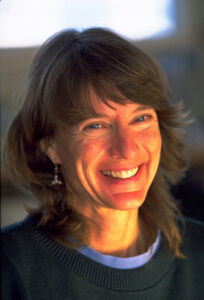
Carol Hasse has been a sailmaker and owner of Hasse & Company Port Townsend Sails, Inc. since 1978. Cruising World describes her sails this way: “Carol Hasse and Port Townsend Sails spin gold by sticking to traditional methods of construction and paying attention to the little things that help sails withstand the tests of time.”
Hasse came to sail making from a love of cruising and a lifelong passion for learning outside the confines of a classroom. By believing in herself Hasse set off to learn how to make sails for a communal schooner-building project in the early 1970s. She first worked under Franz Schattauer, a master sailmaker in the old-world tradition and eventually with Ron Harrow, who owned the only sail loft in Port Townsend at the time. You will find Hasse today in that same loft, if she’s not off on a maritime adventure.
Hasse is a founding board member of the Wooden Boat Foundation. She is a regular judge at the Victoria Classic Boat Festival and has served in the past as a judge for Cruising World’s Boat of the Year competition at the Annapolis Boat Show. She has also been a speaker at Safety at Sea seminars on both coasts.
Hasse regularly lectures for the Wooden Boat Foundation and the Northwest School of Wooden Boat Building. She is active in teaching and lecturing on all aspects of sailmaking, sail repair, sail inventory, and sail handling. Instructional venues include sail training vessels, boat shows, yacht clubs, offshore cruising seminars, Safety at Sea seminars, and Port Townsend Sails’ in-loft Hands-On Sail Repair Seminars. She has been active in women’s and youth sail training in the Northwest and the South Pacific for over 30 years.
This year the Northwest Maritime Center named the beach by the center in honor of Carol Hasse for her unusual community-building pastime. See if you can find the plaque.
Carol Hasse says she feels blessed to live in the Pacific Northwest where she has actively sailed her 25’ 1959 Nordic Folkboat, Lorraine, since 1979.
